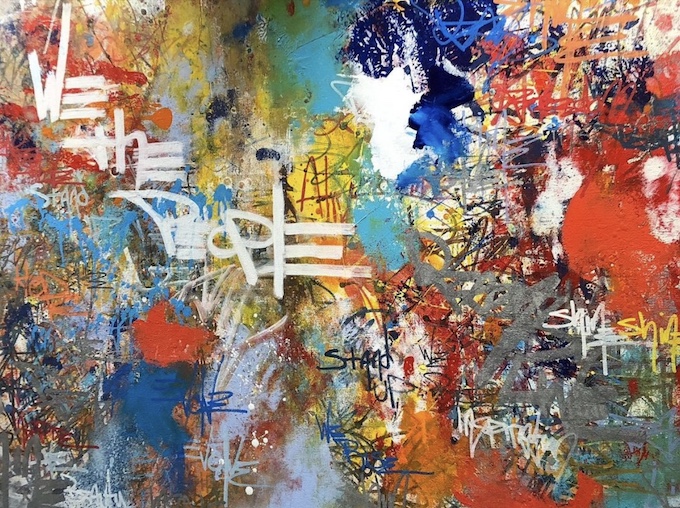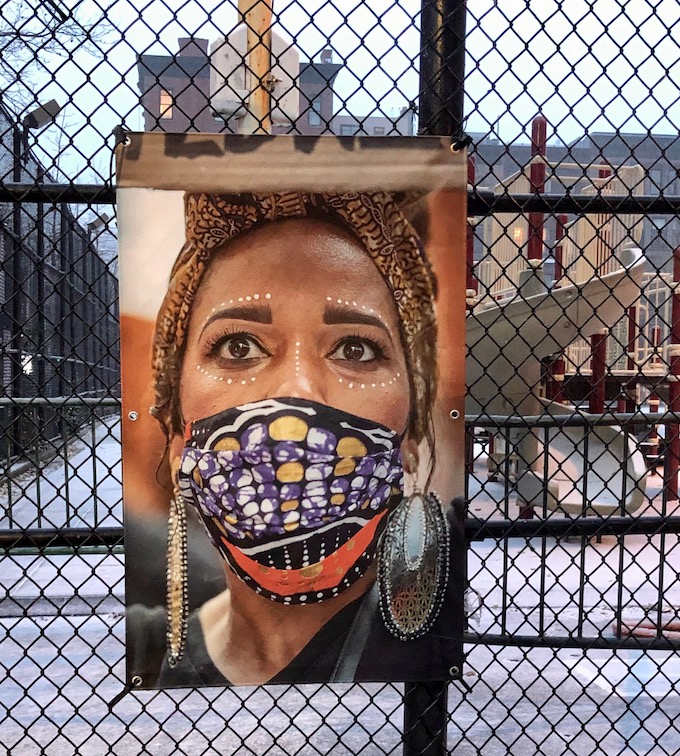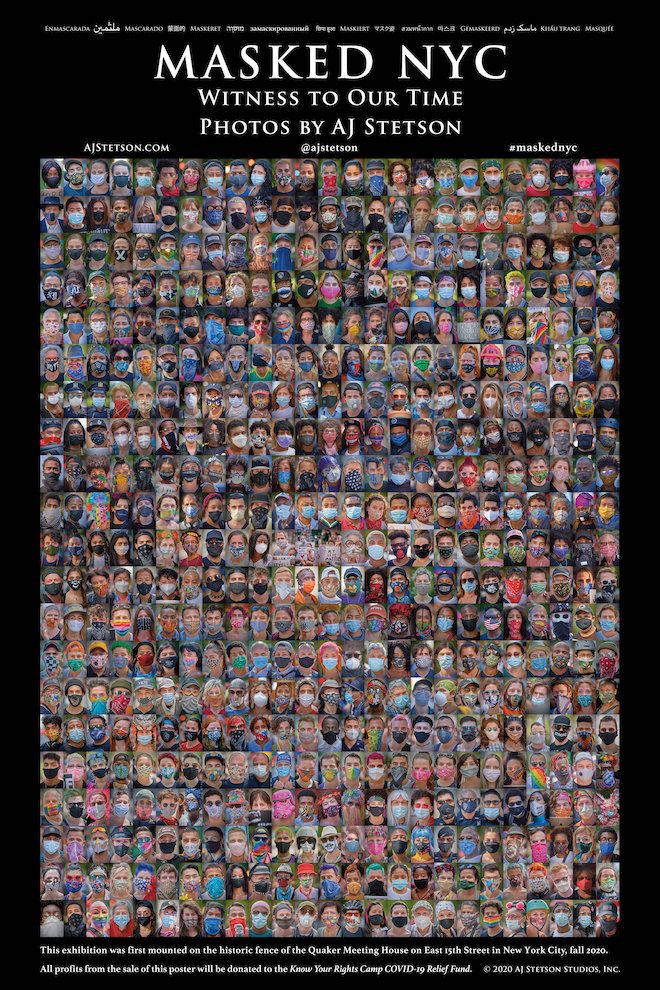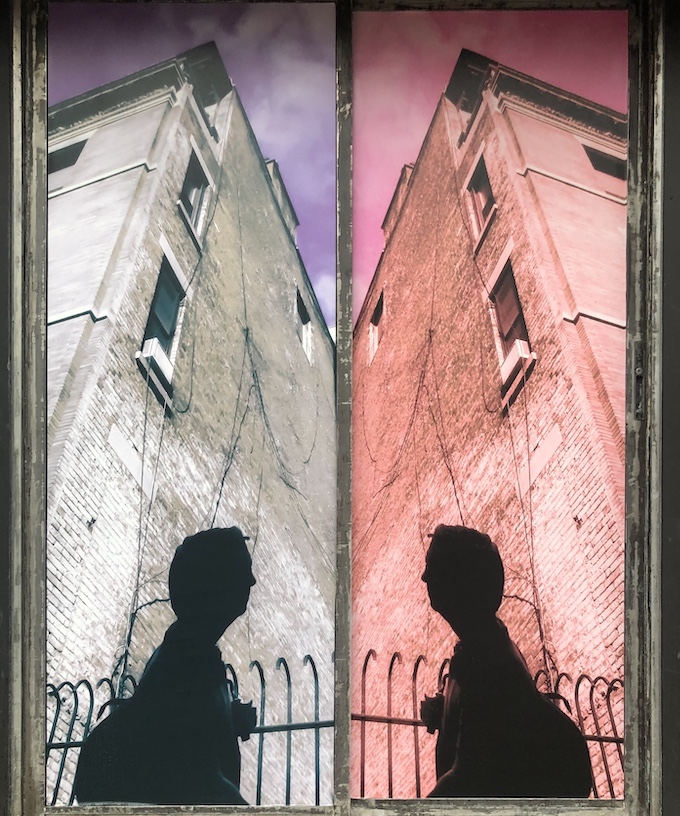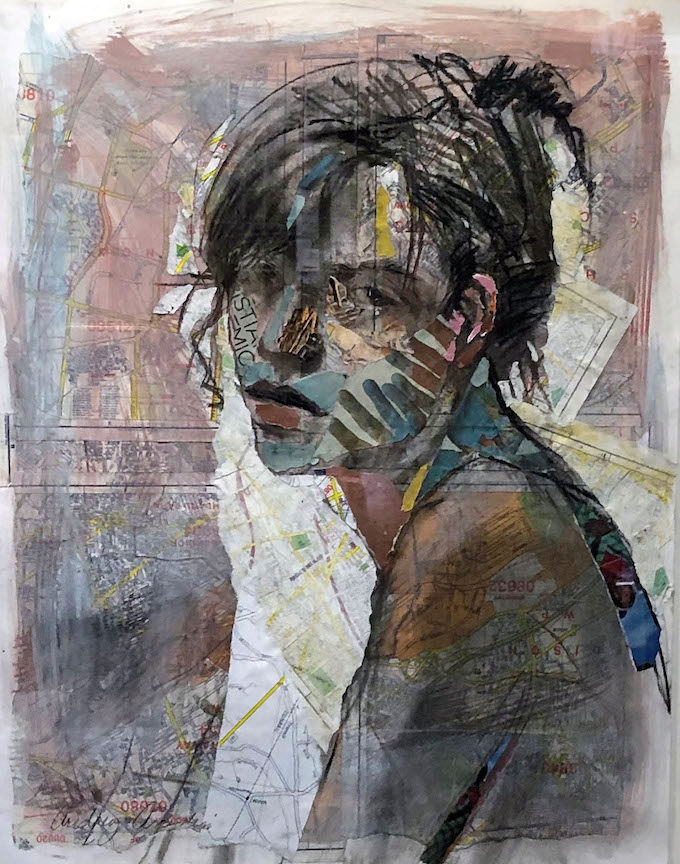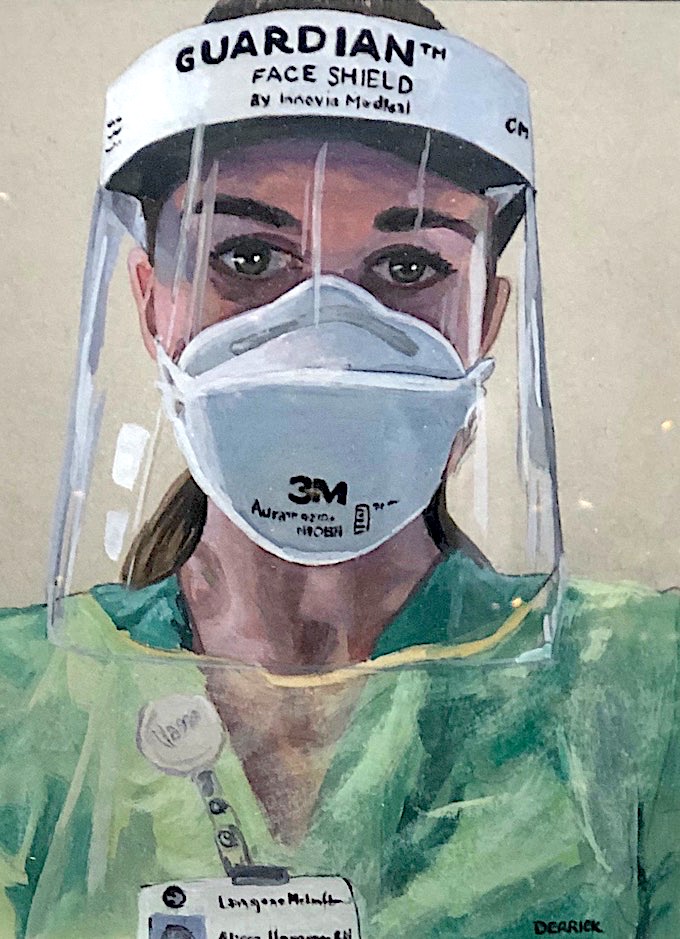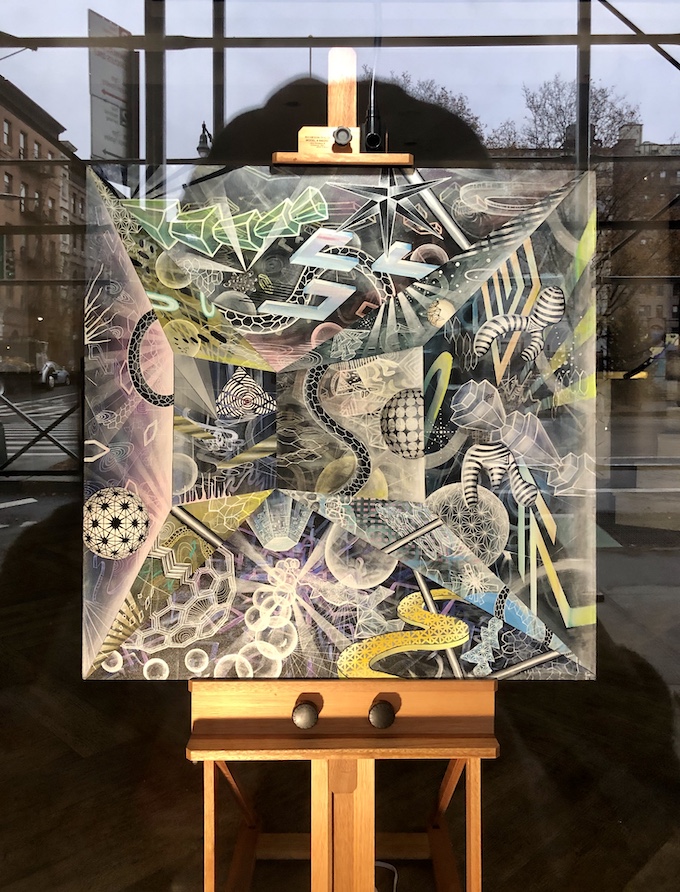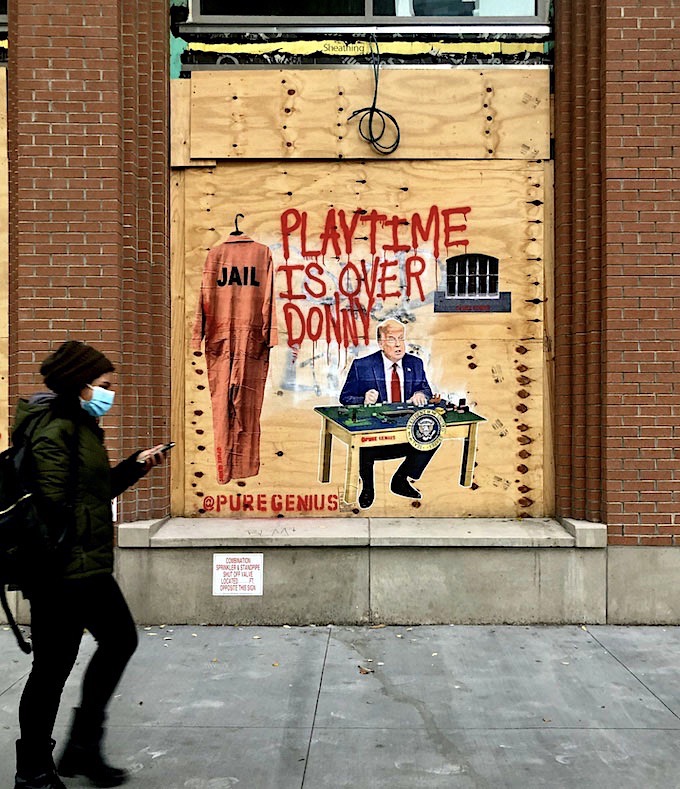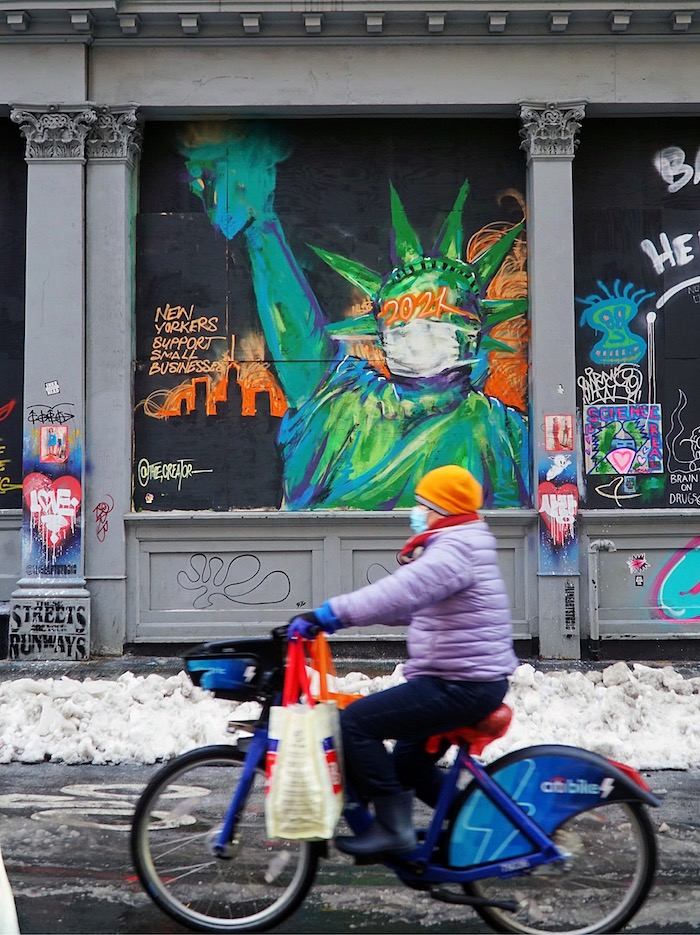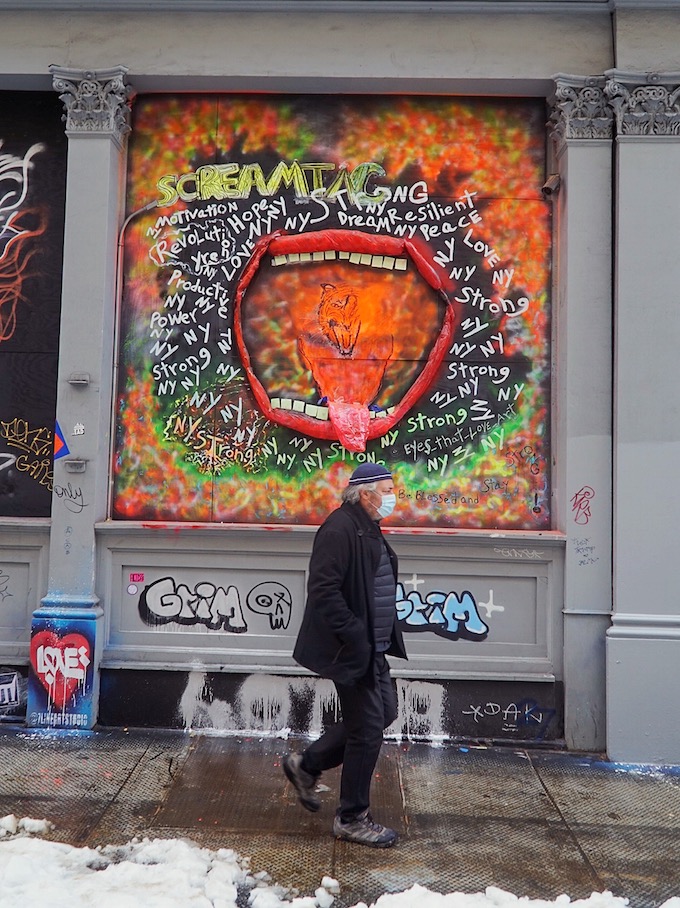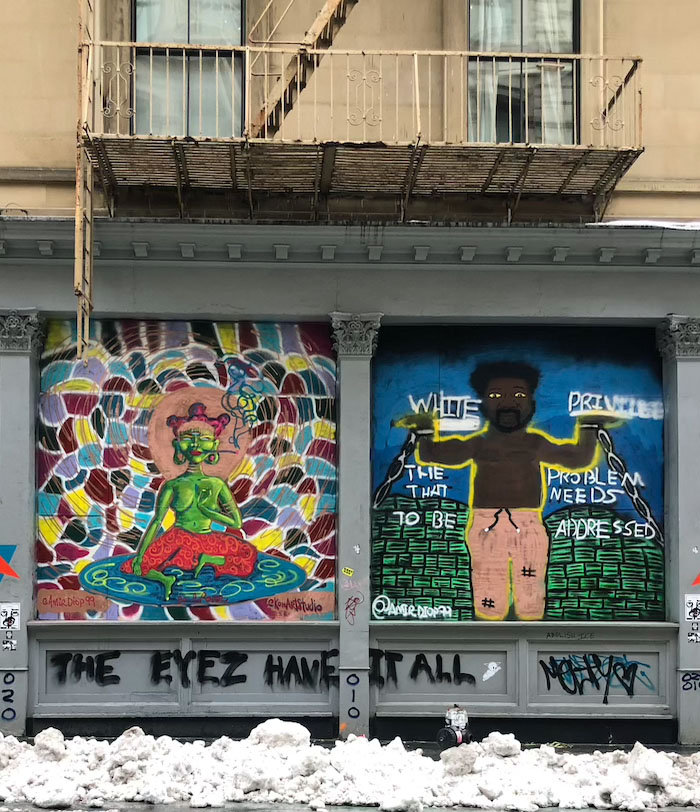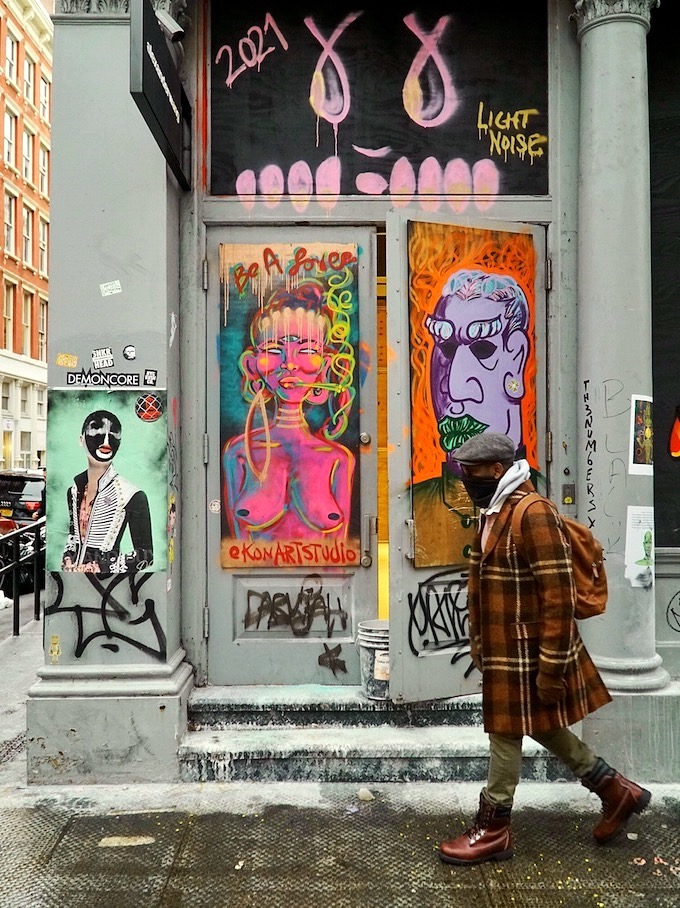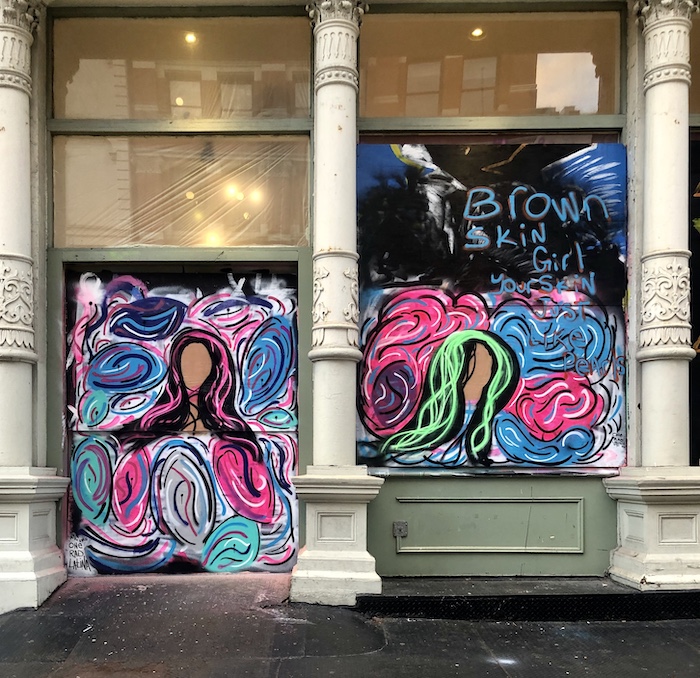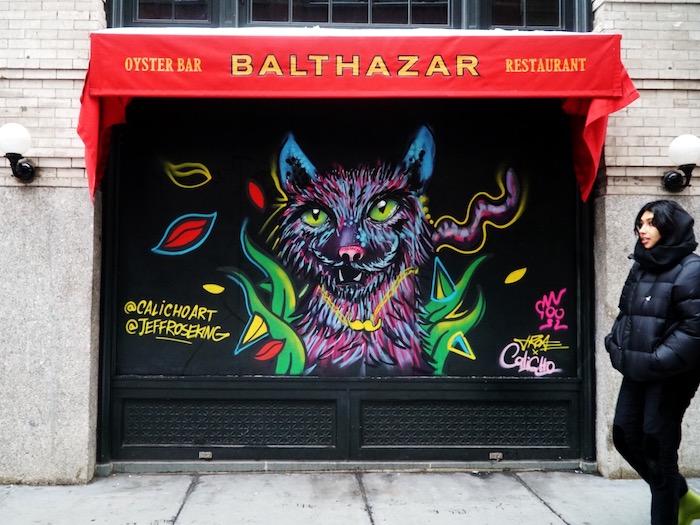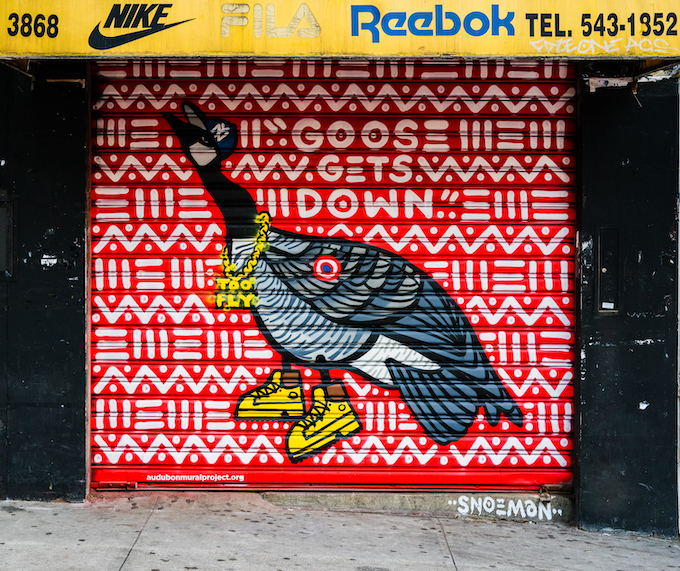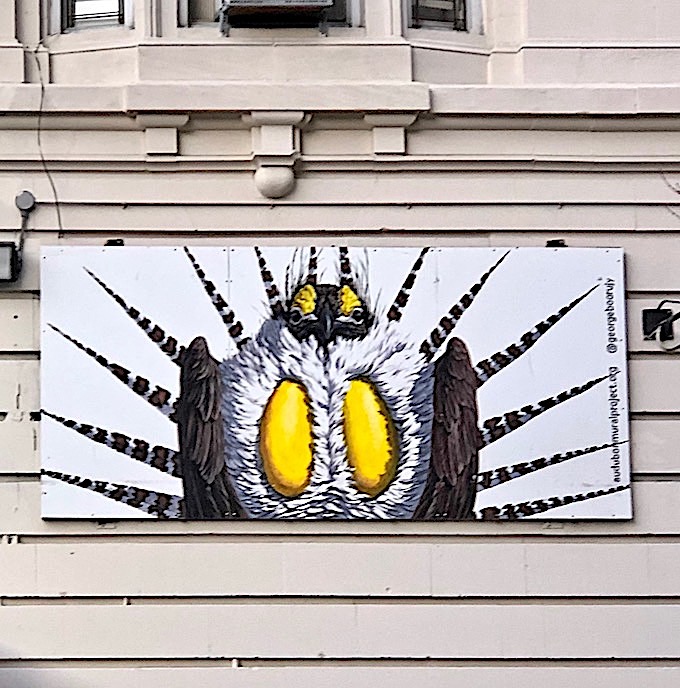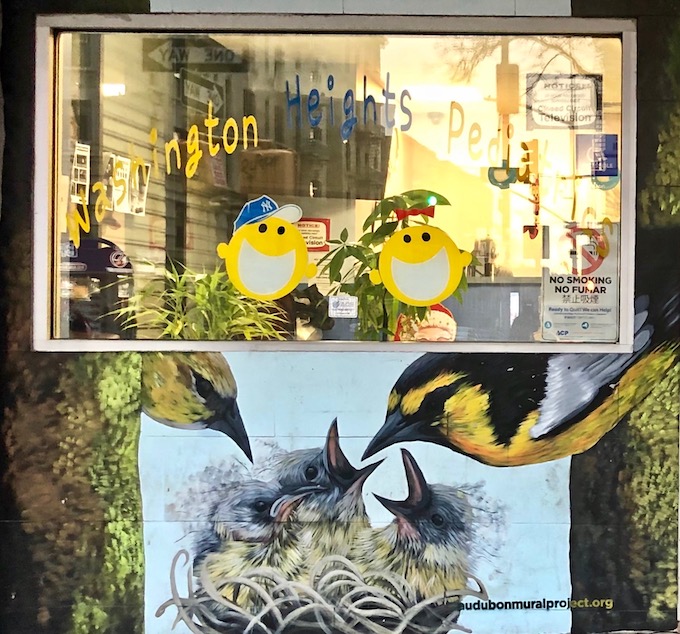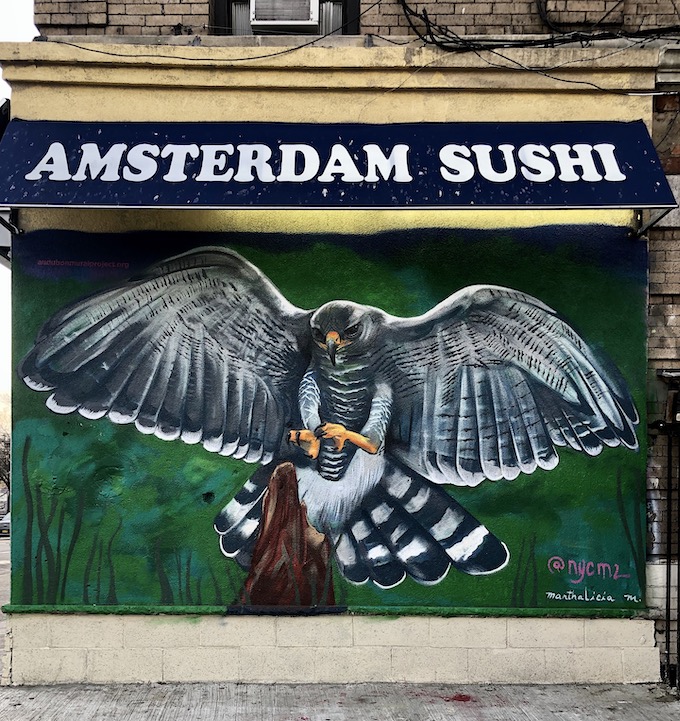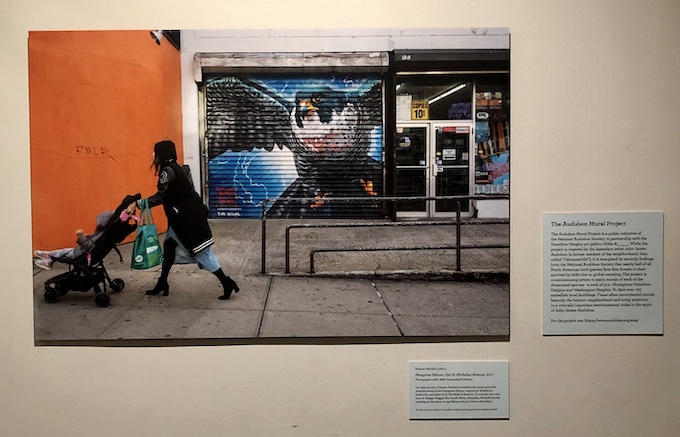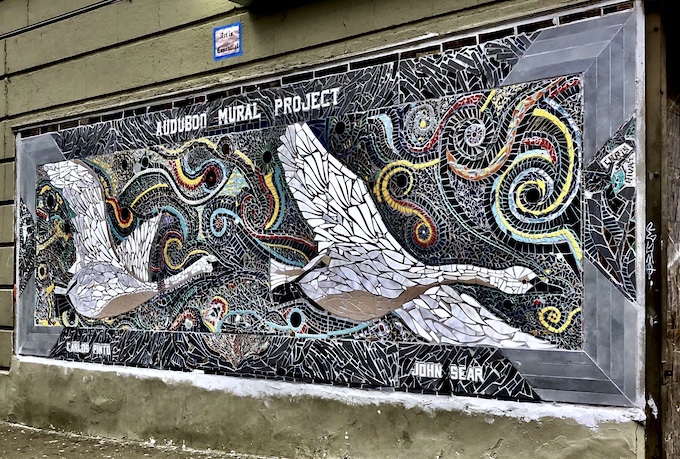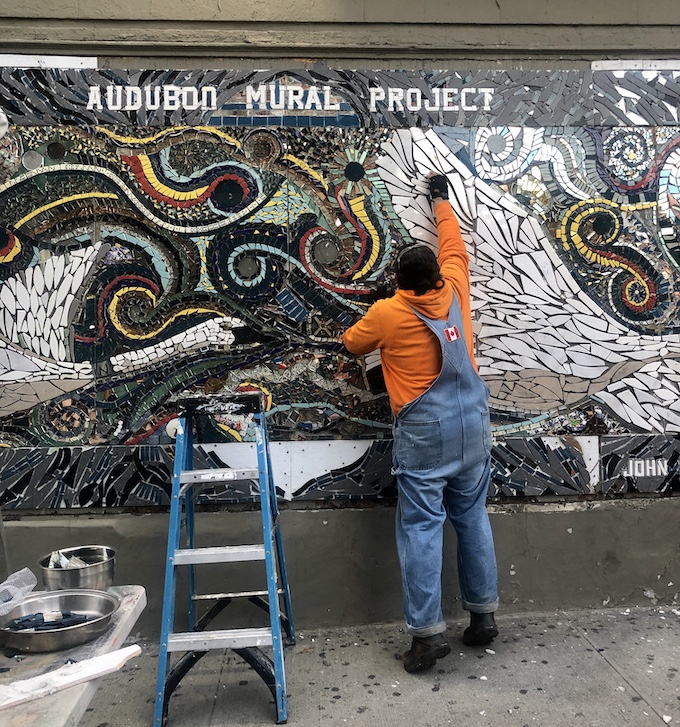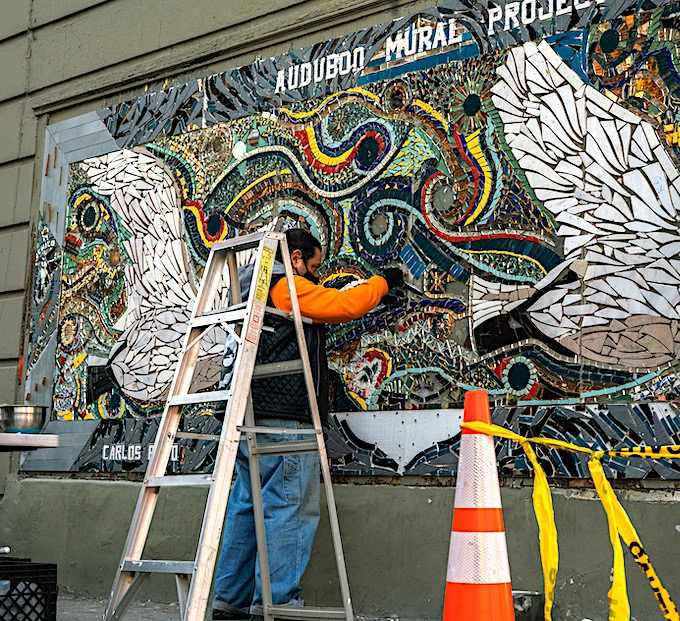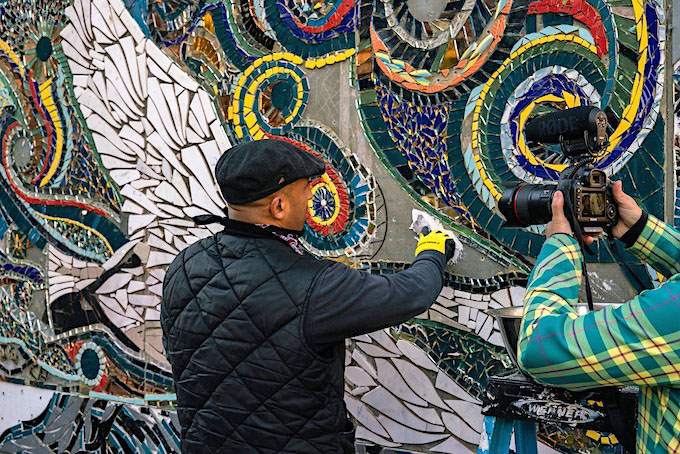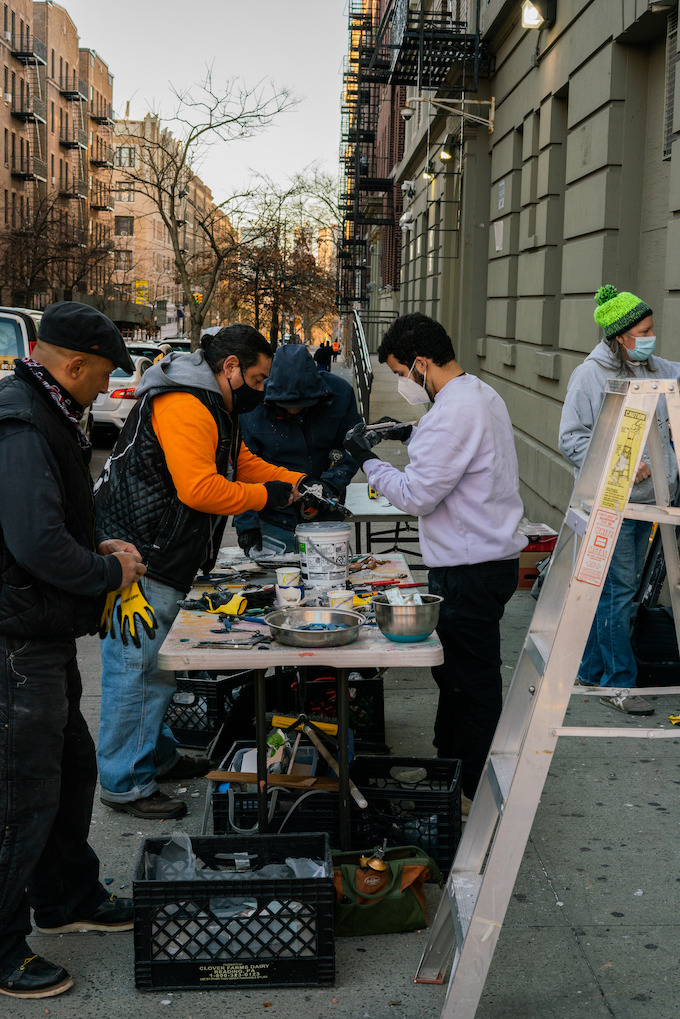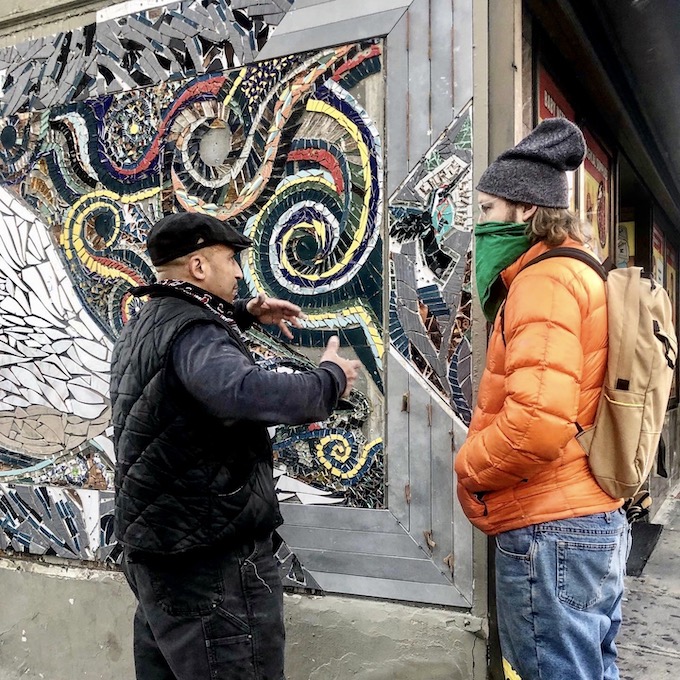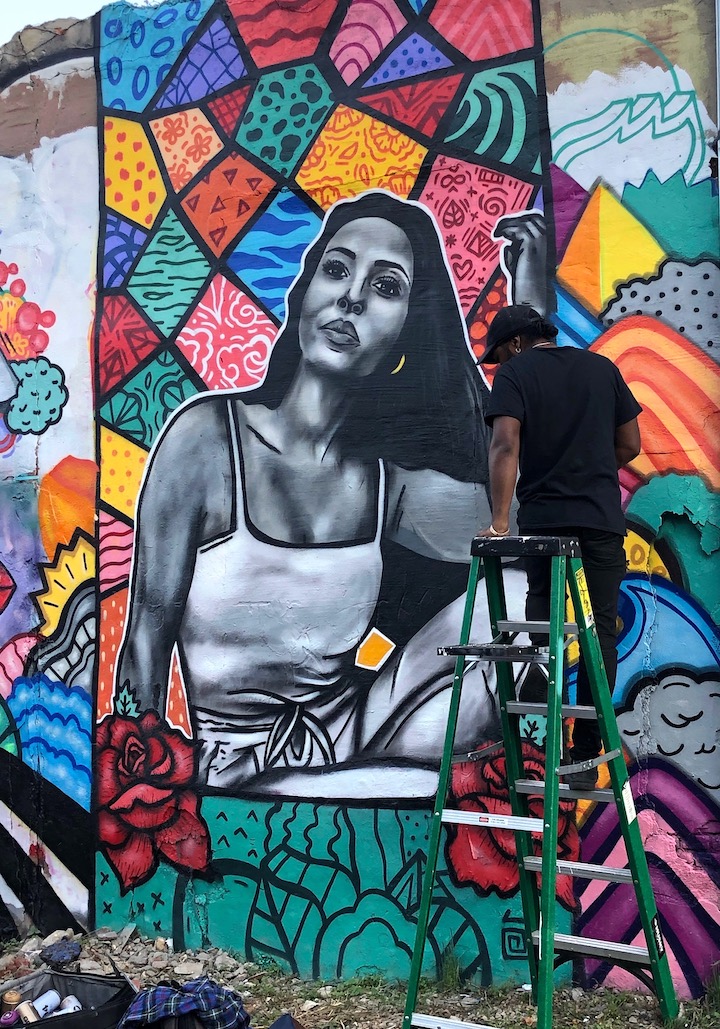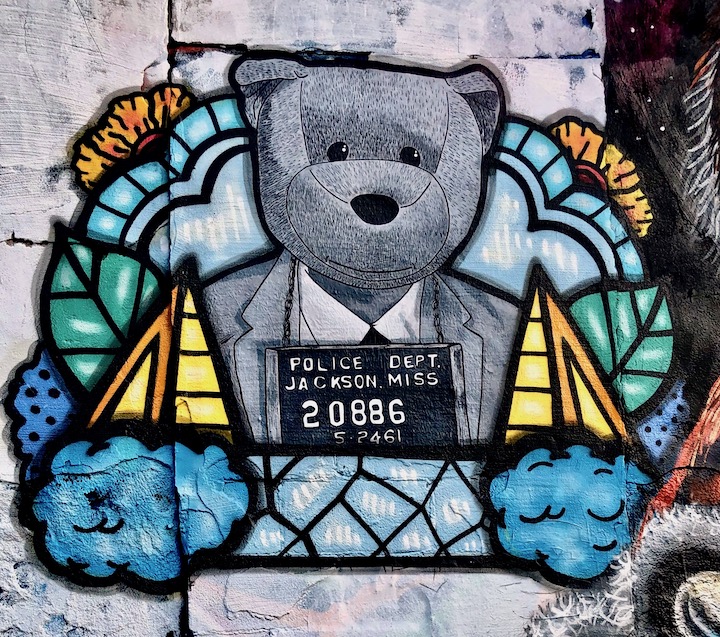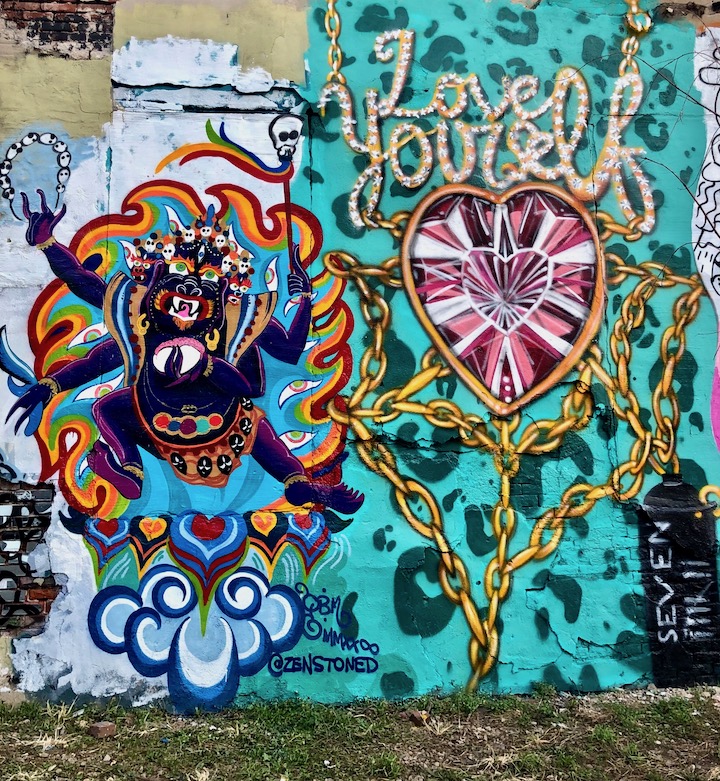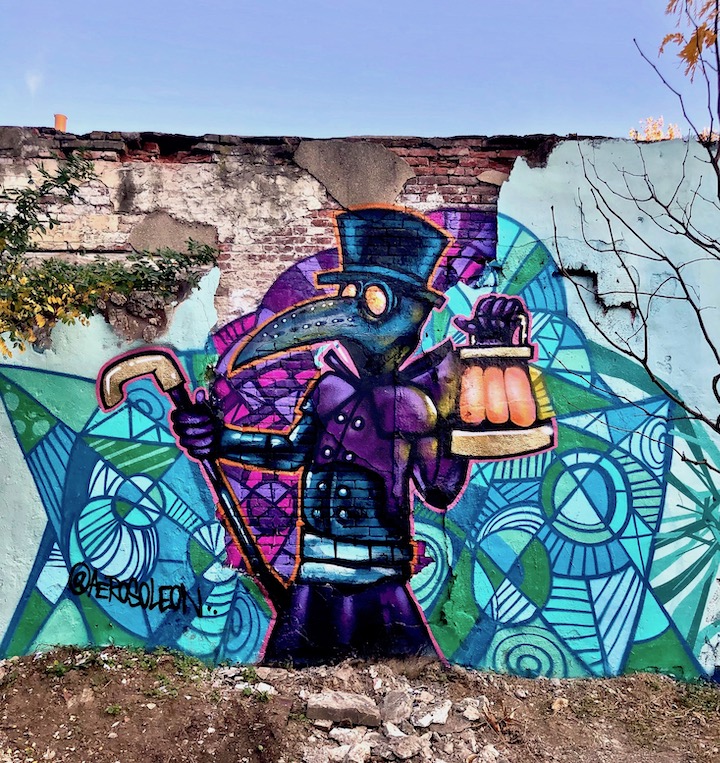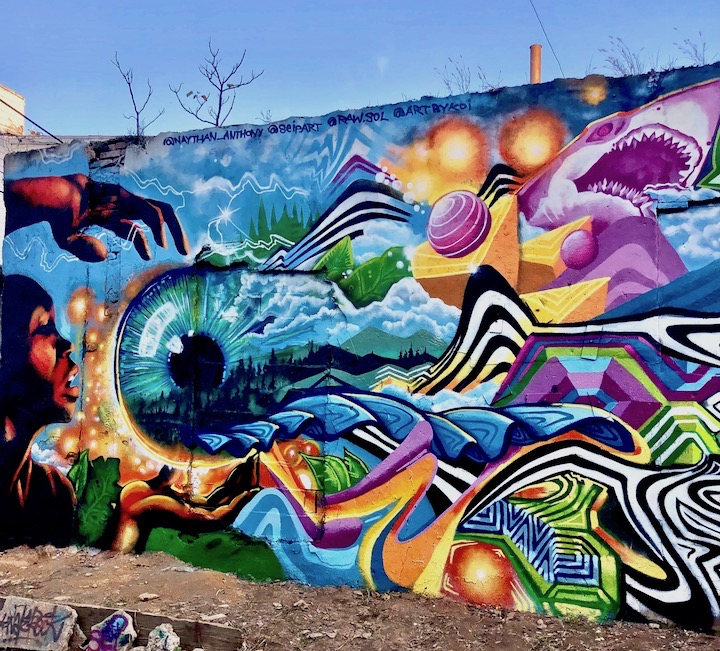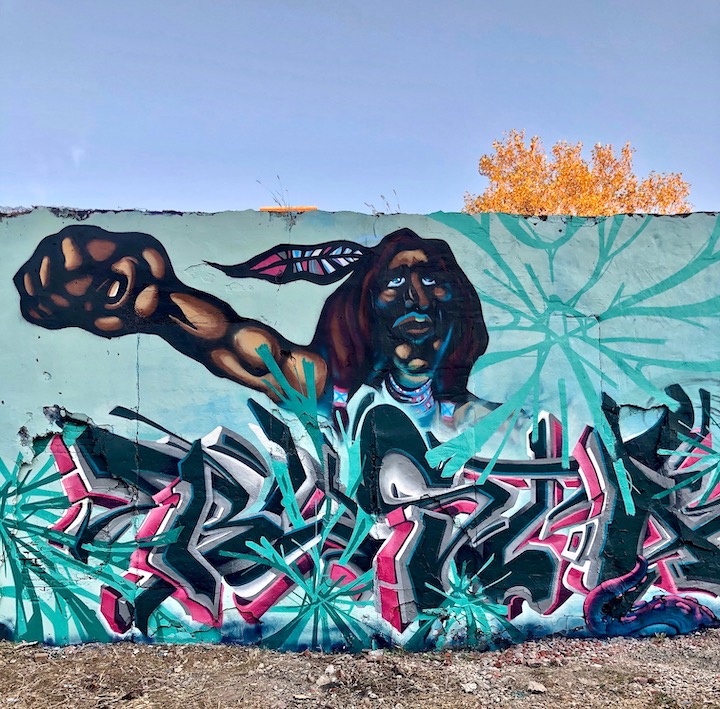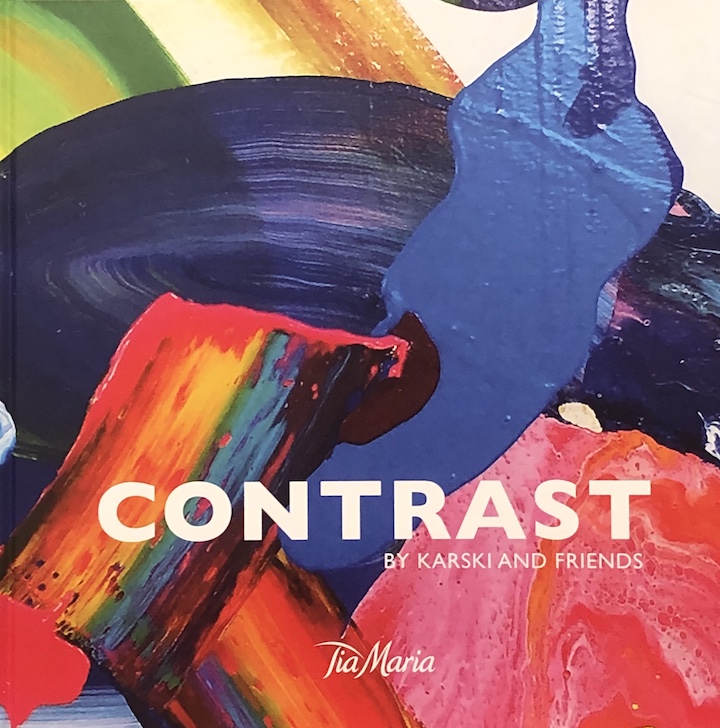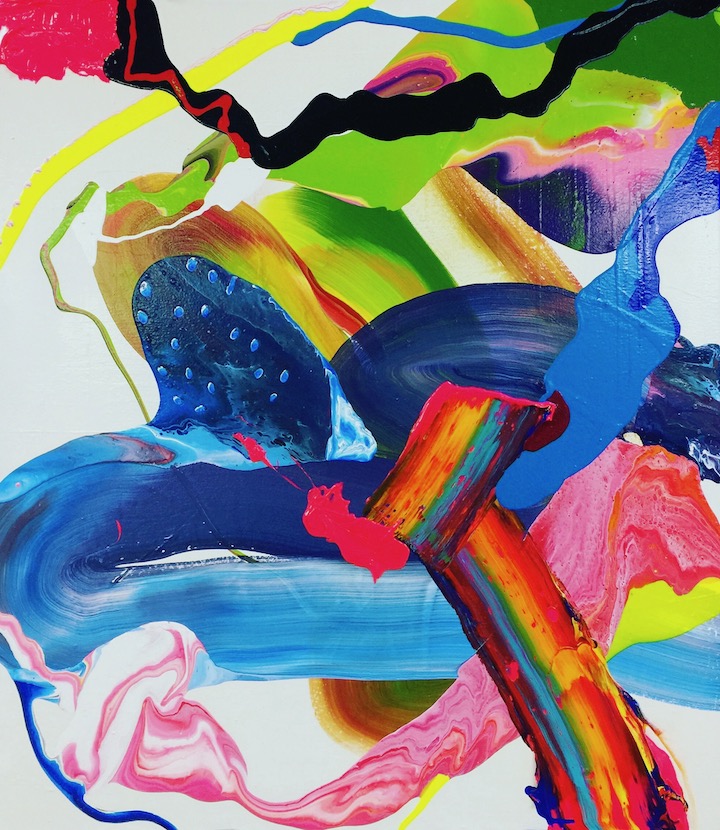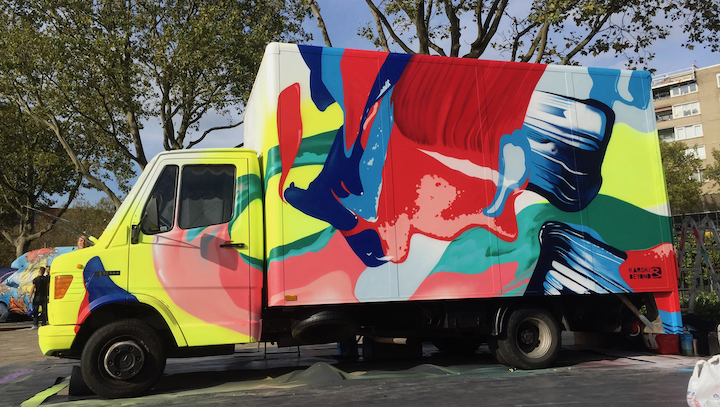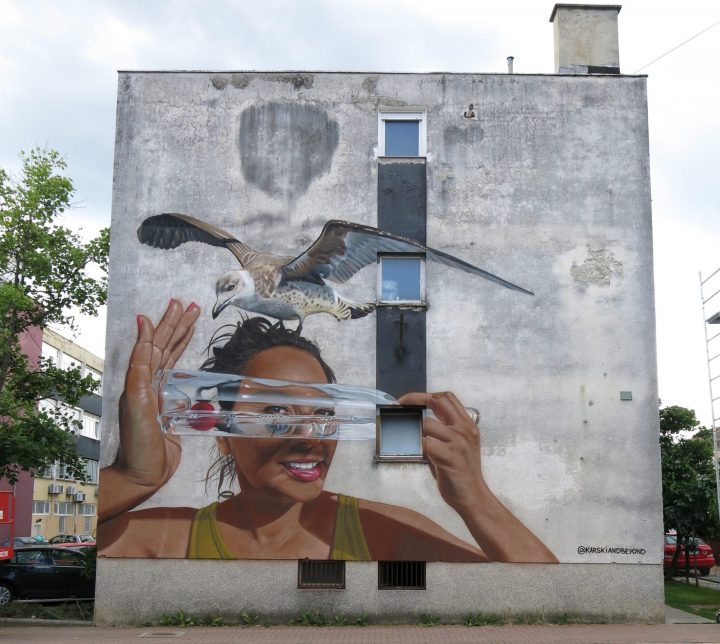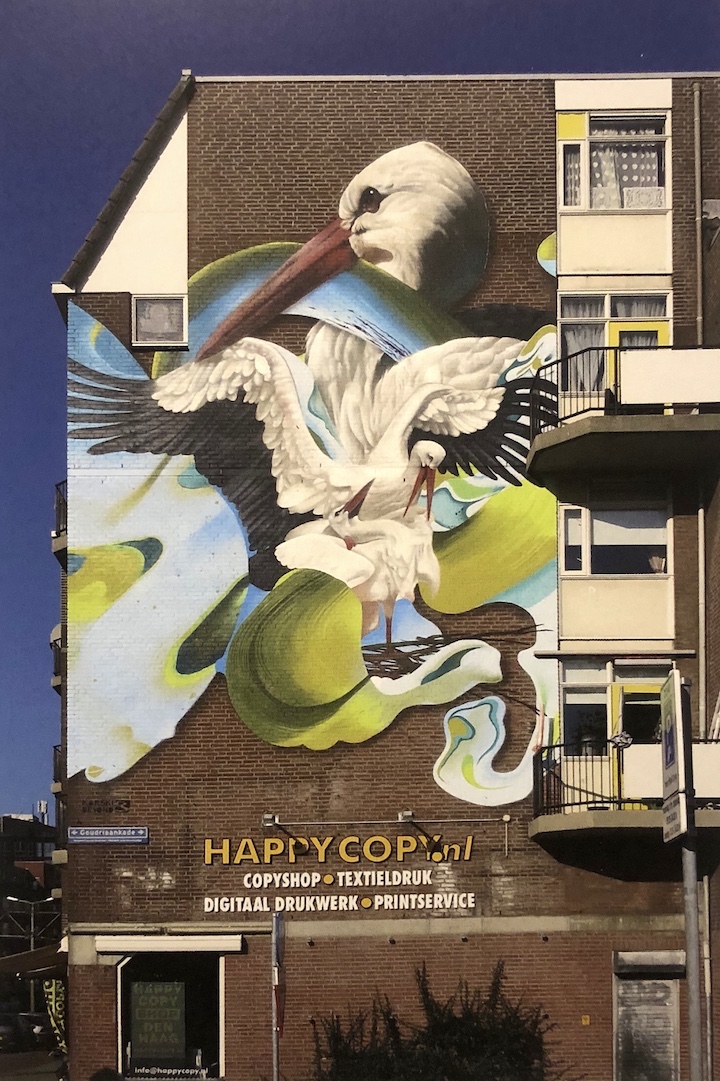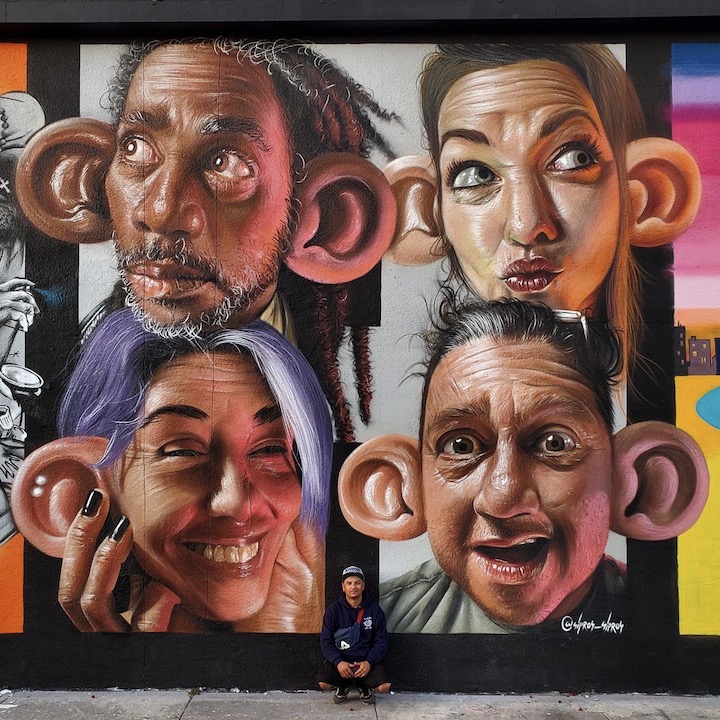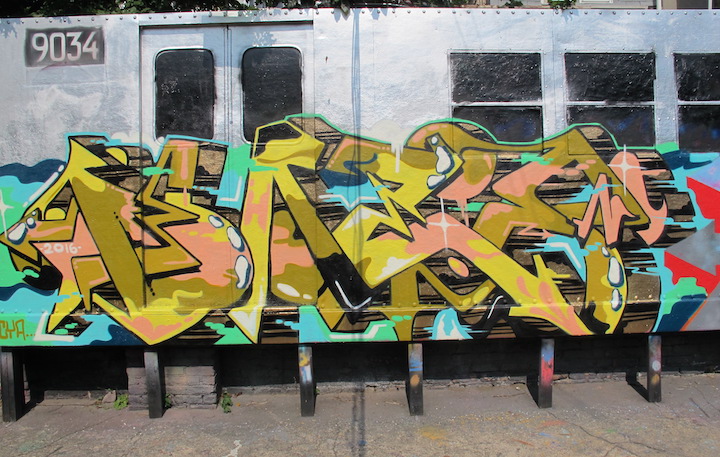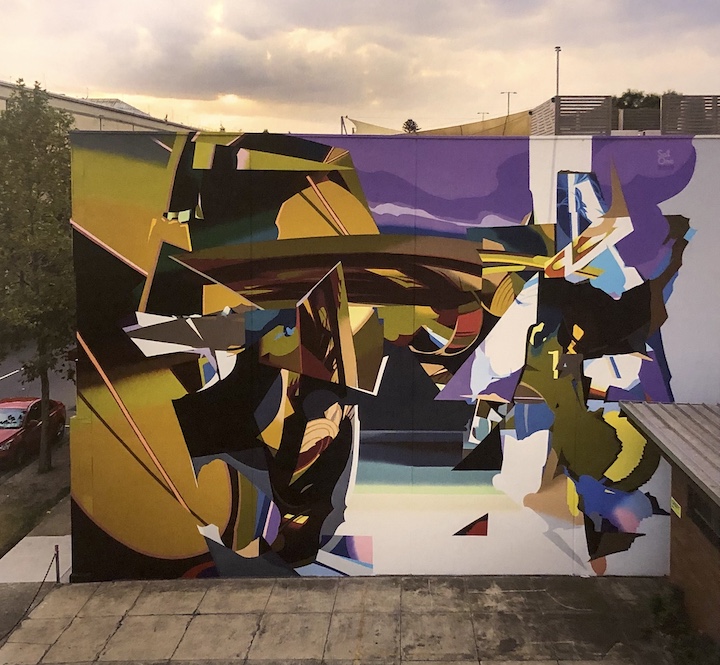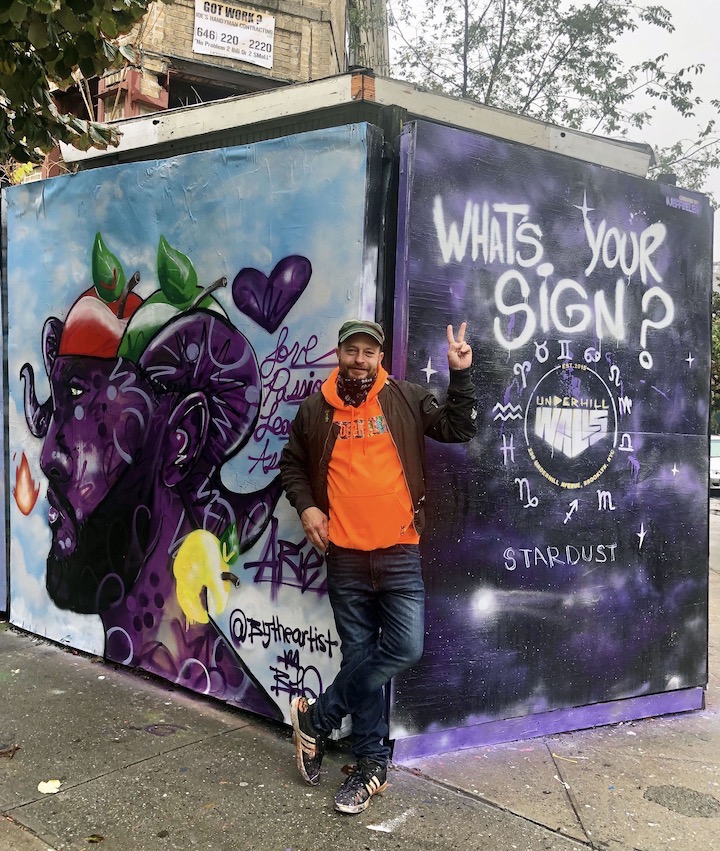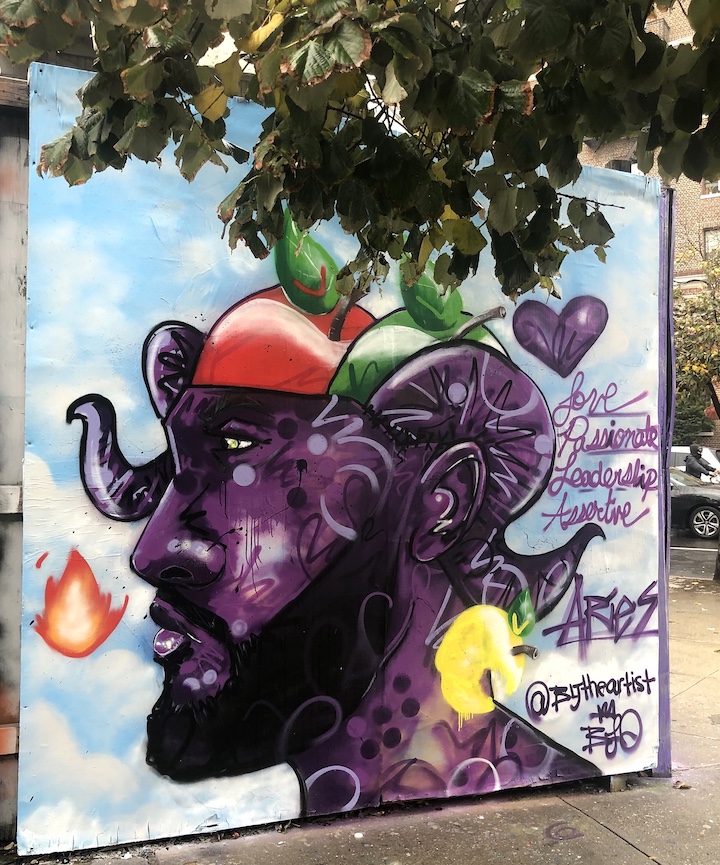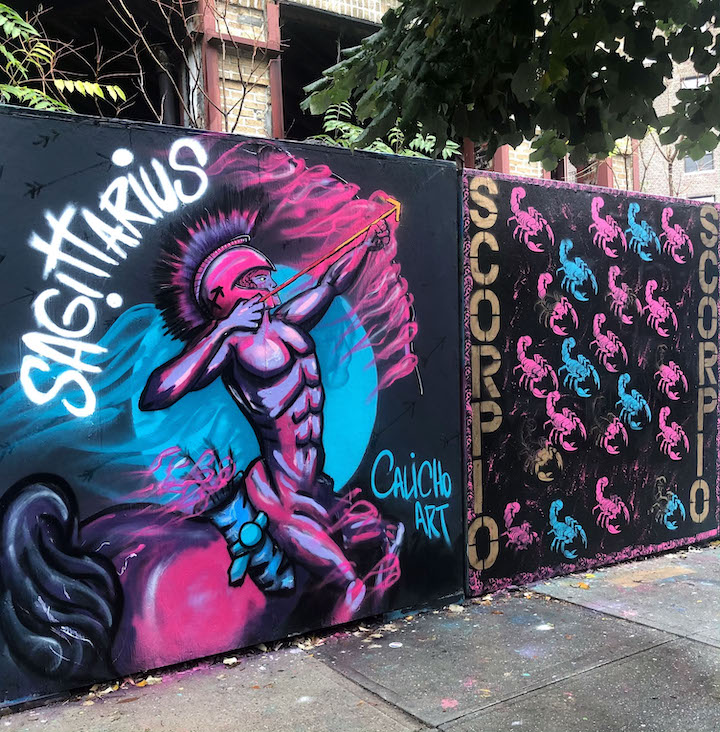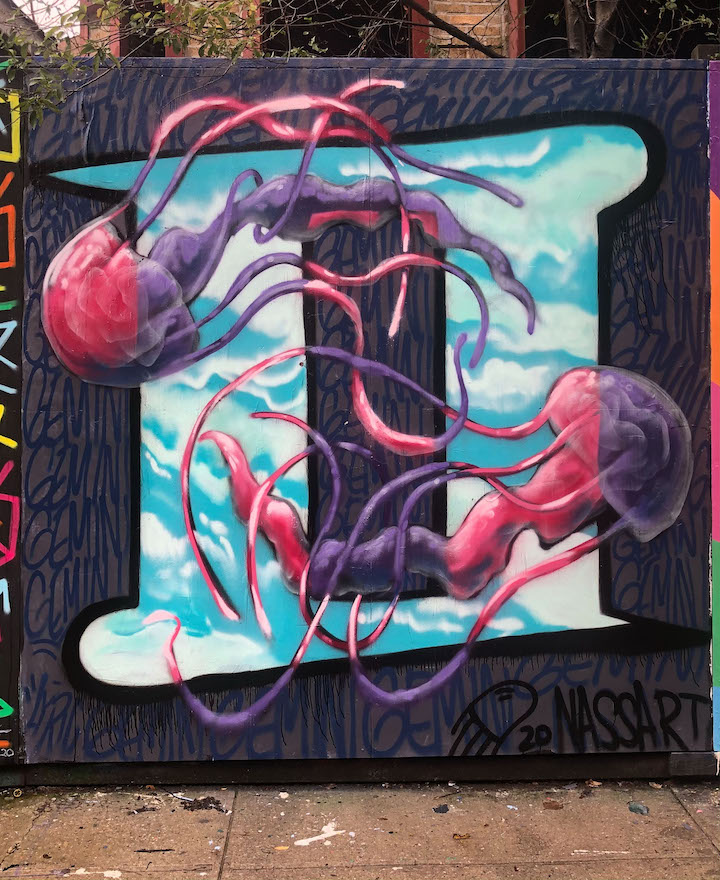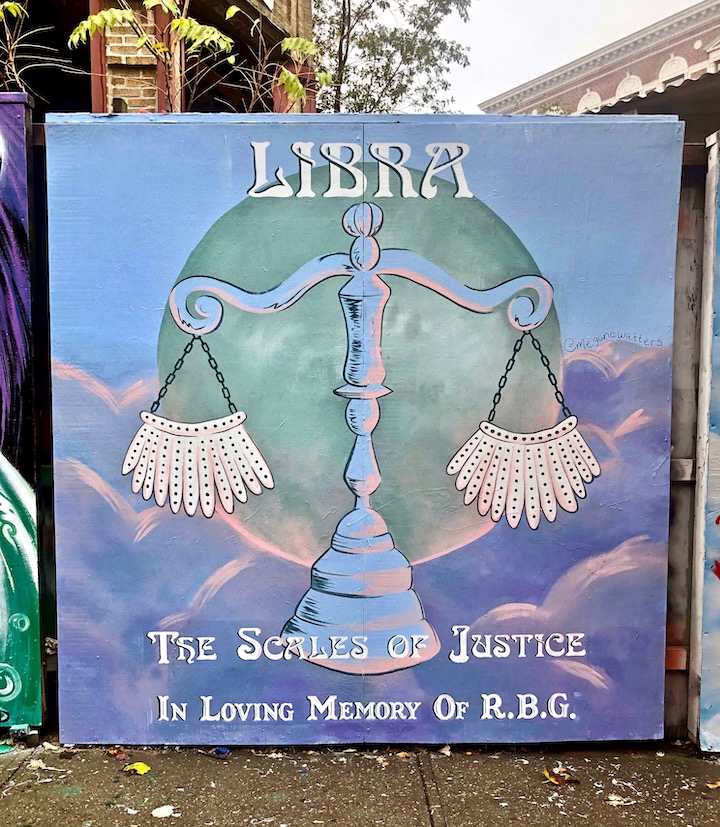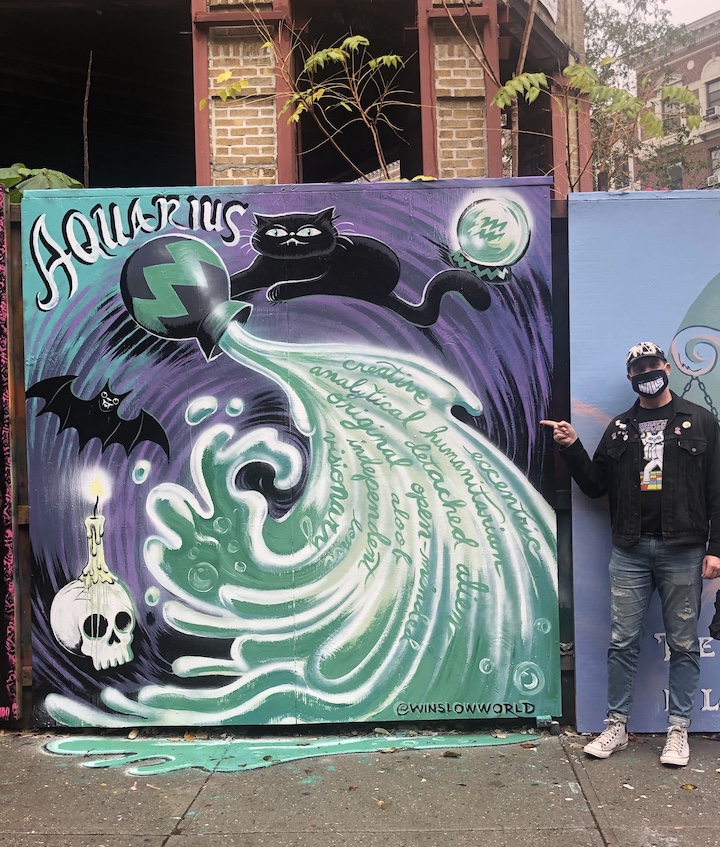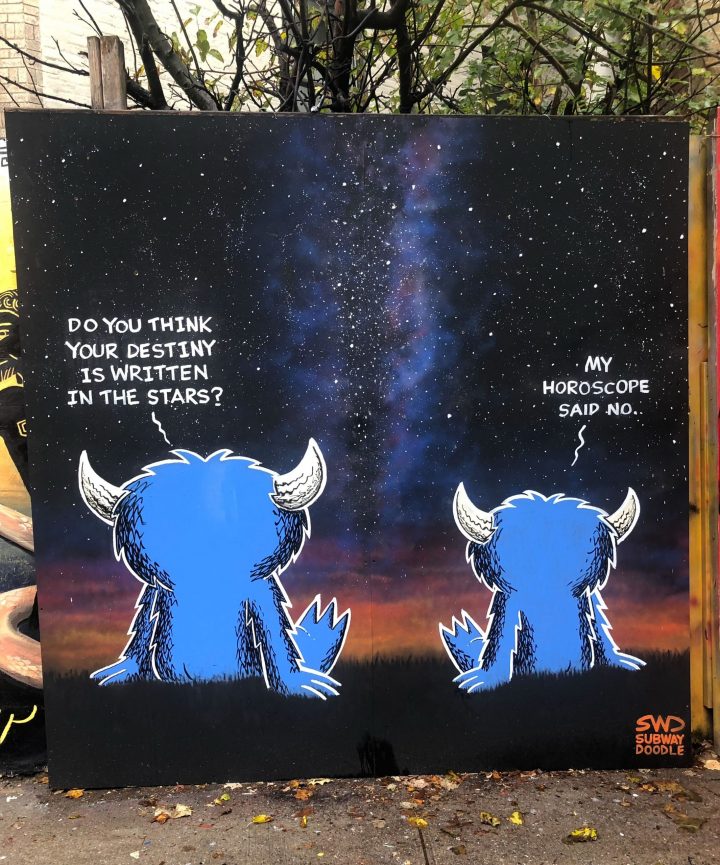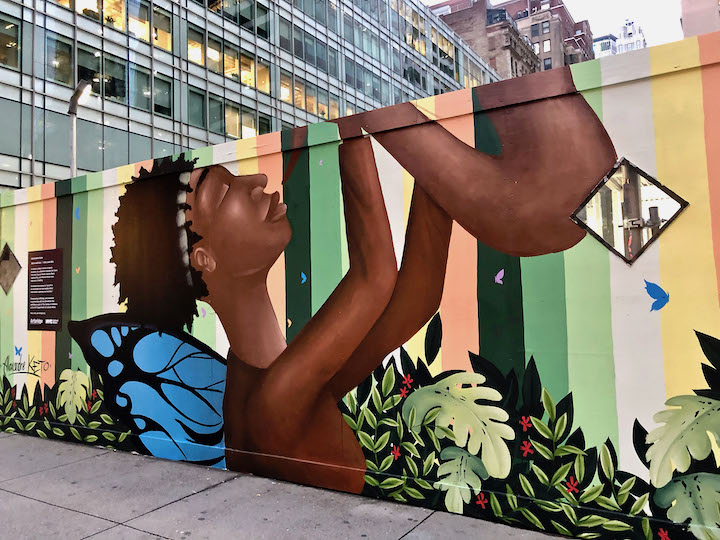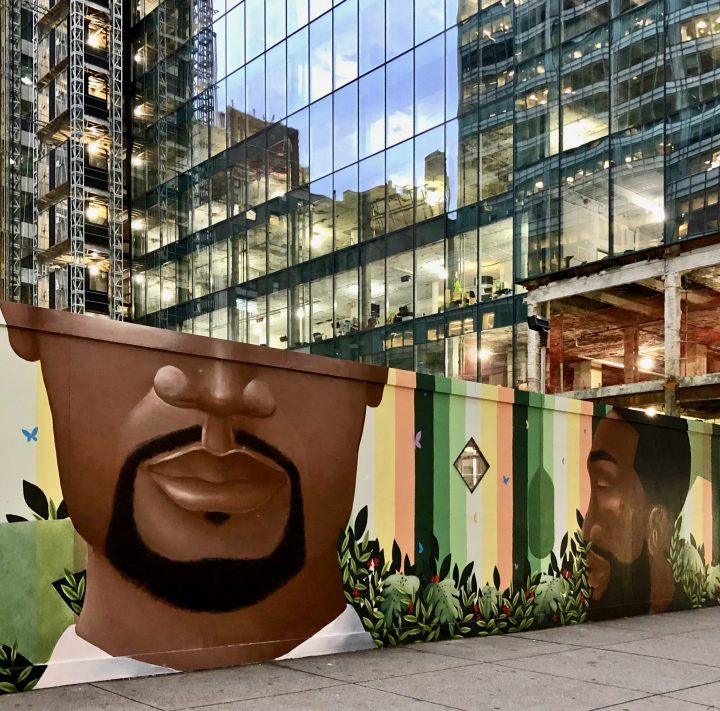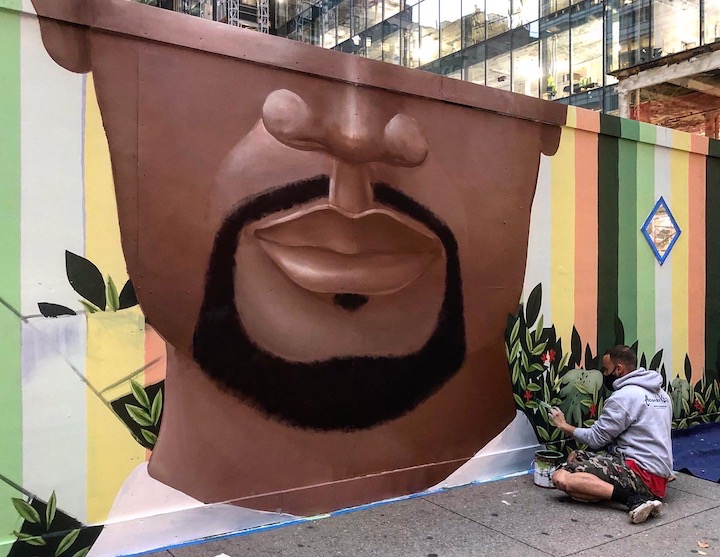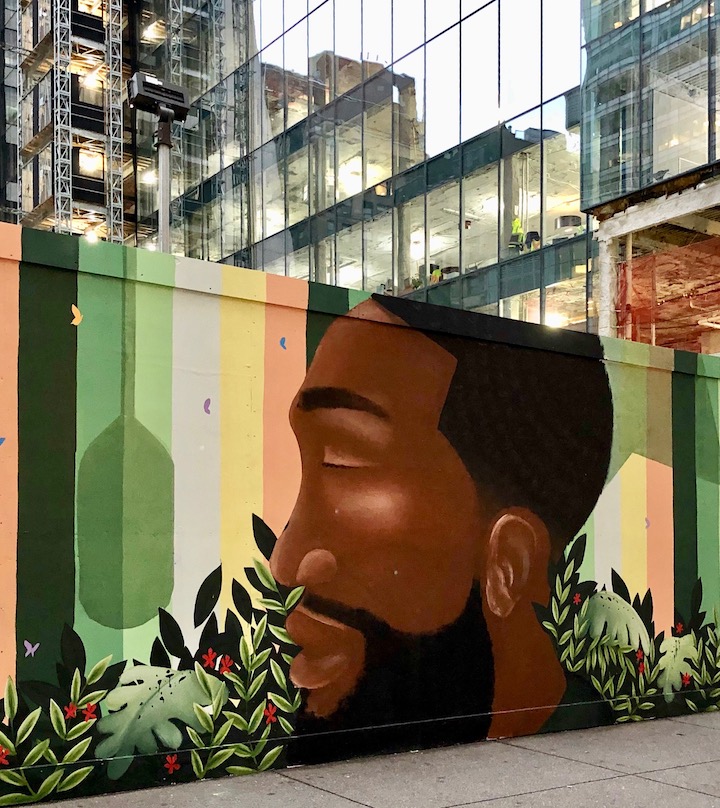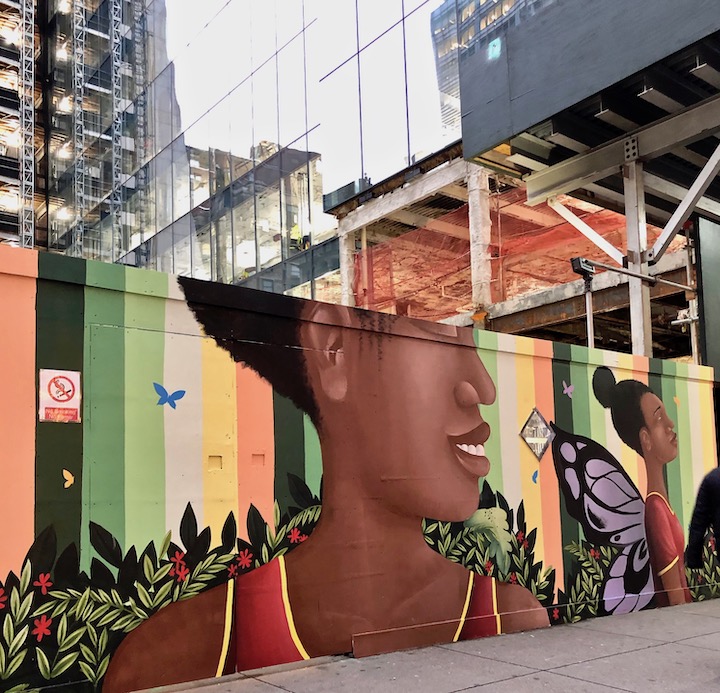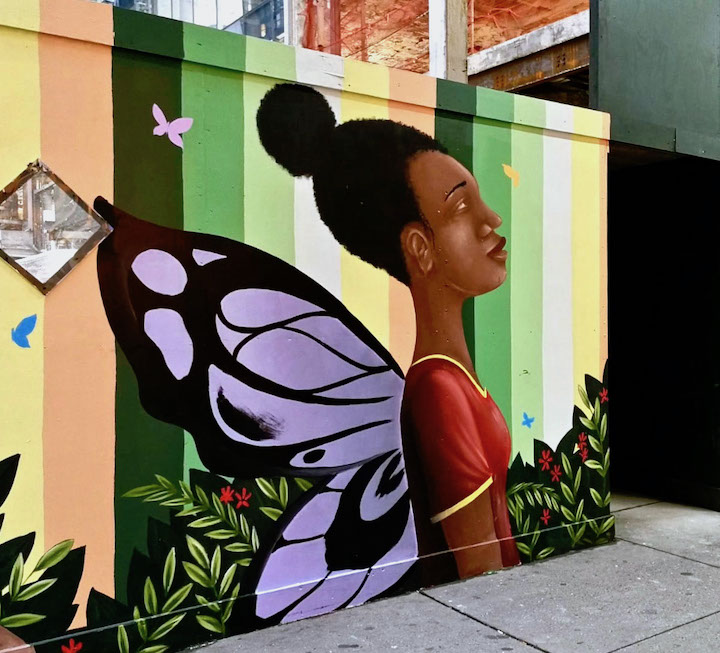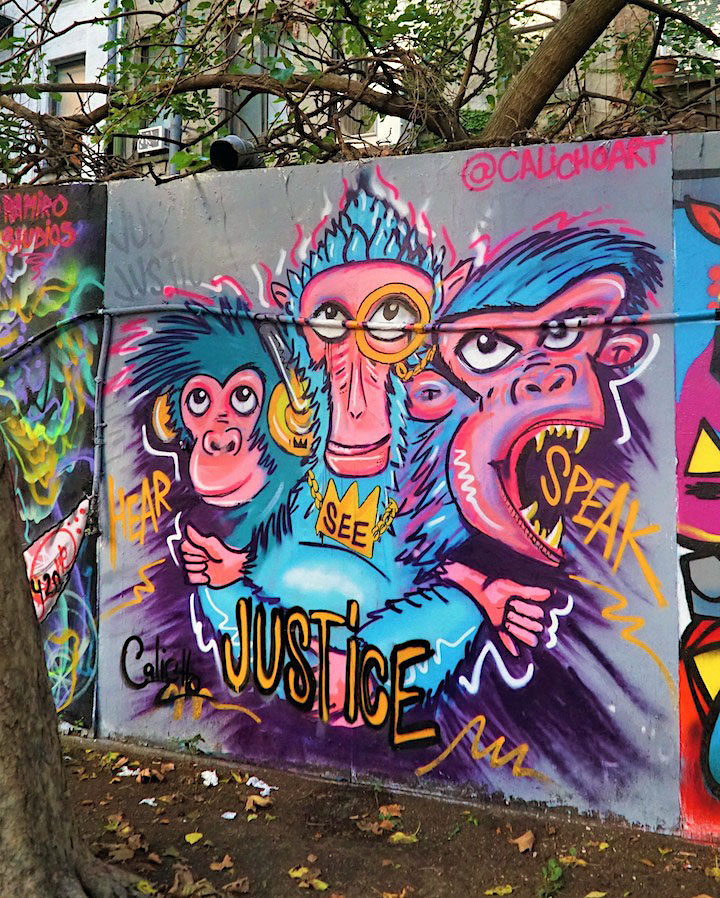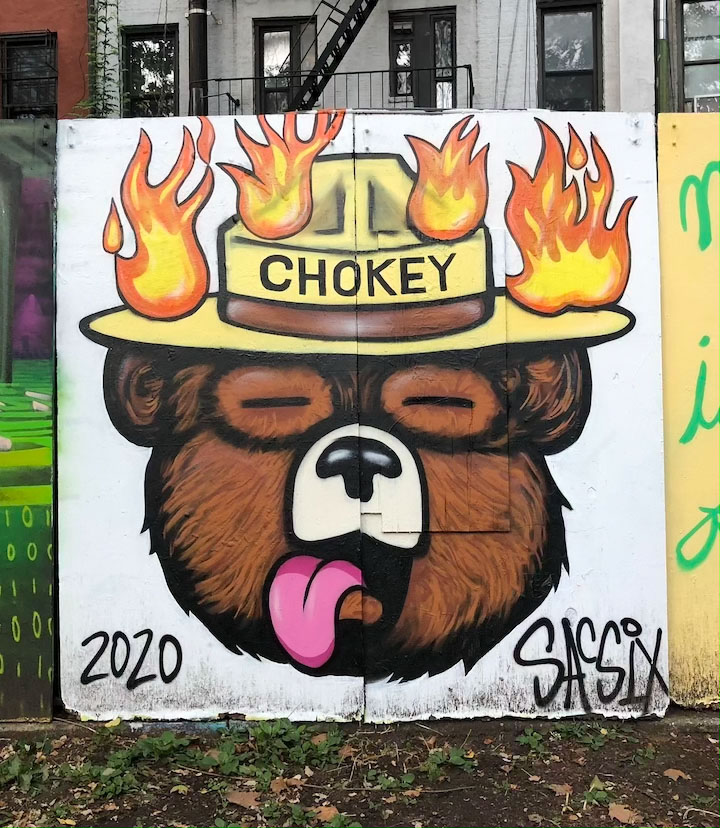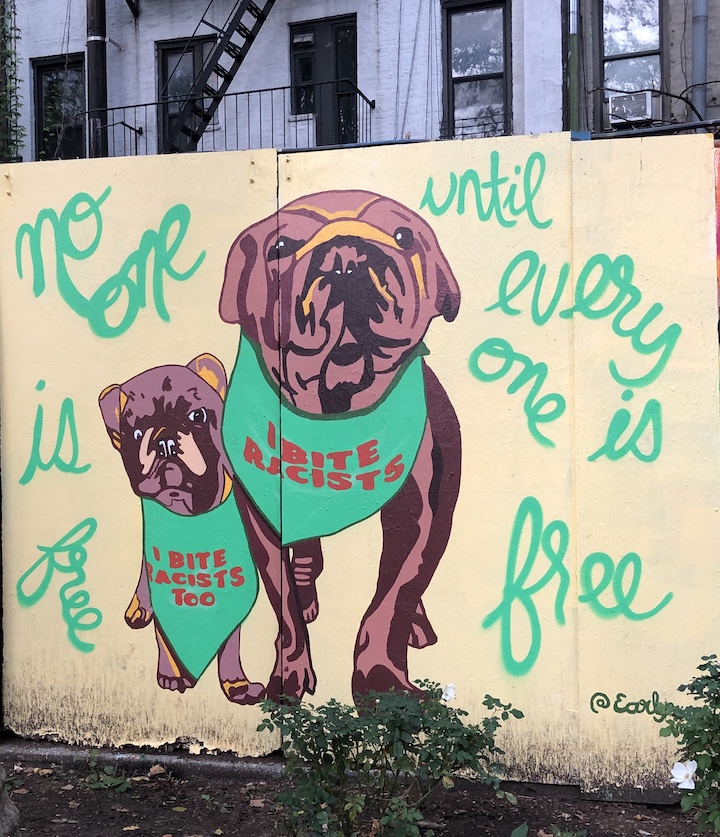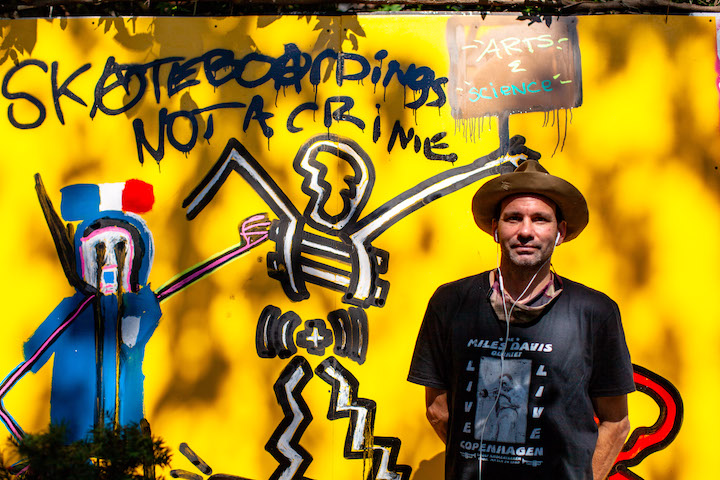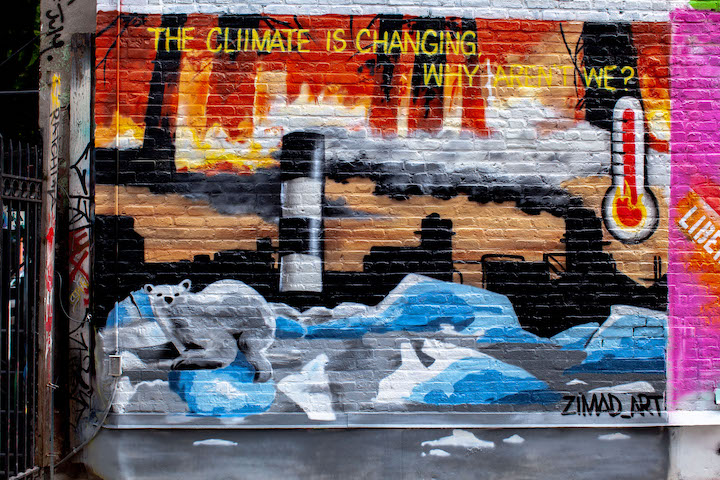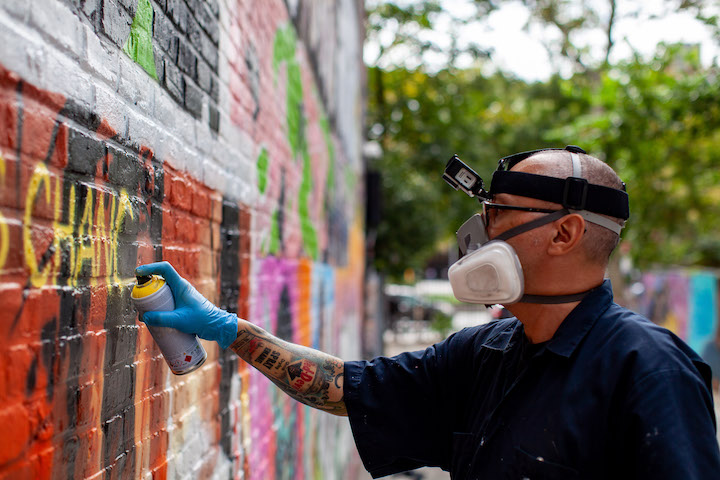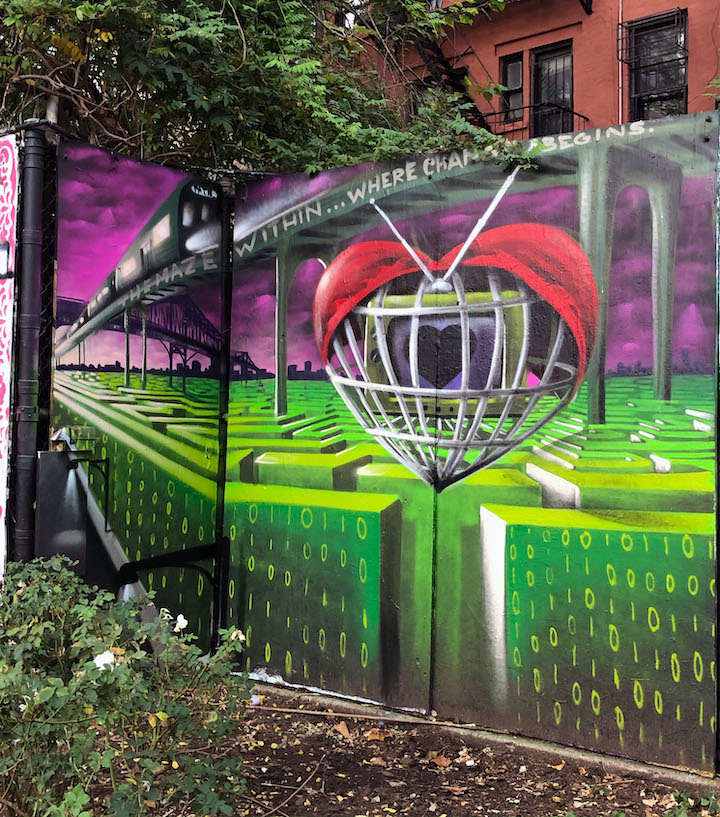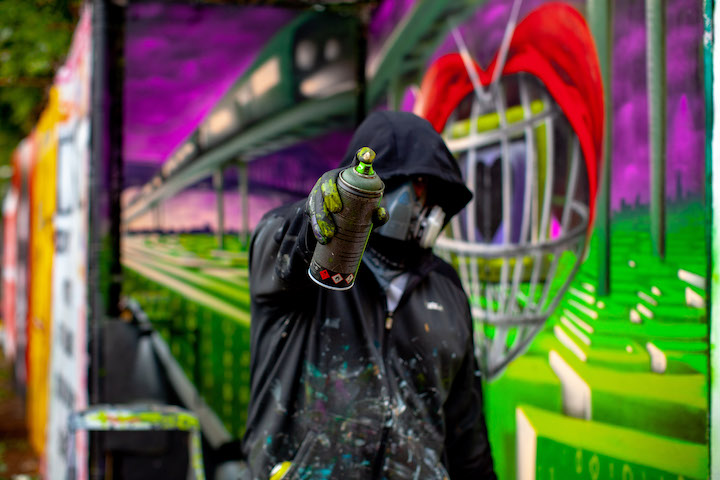
A Presidential Parody continued to make its way around town on Sunday — despite the steady rain — with stops at Trump Tower and neighboring sites. A brief interview with New Yorker actor/creator Maia Lorian, who conceived and enacted — along with Enormvs Muñoz and kelci greenway — Sunday’s gorilla art performance, follows:
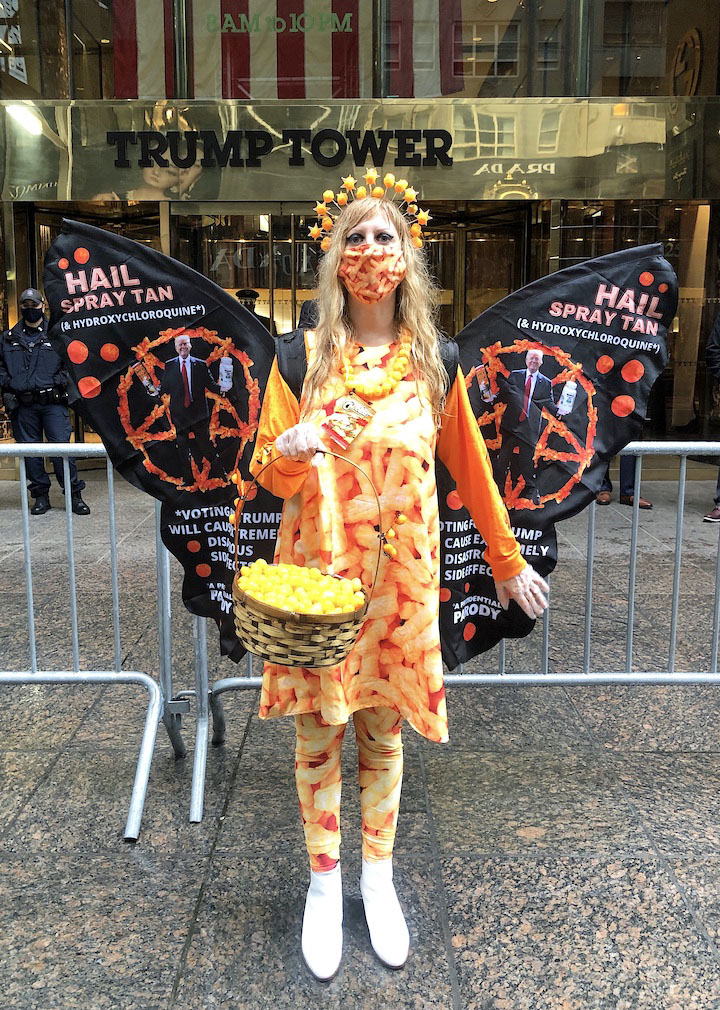
What inspired this particular chapter of A Presidential Parody?
My latest ad takeover for A Presidential Parody was made under the truest digital dystopian duress that is 2020. A solo work, from creation through install, made during the last days of my mom’s life. The piece is admittedly darker than my previous works, as virtual vigils and FaceTime goodbyes — followed by my dear mother’s Zoom funeral — took place in the background. This piece is in honor of my mom and every other life tragically lost during the Trump presidency. I like to bring my posters to life, like in a true ad campaign, which allowed this poster to progress into a funeral march
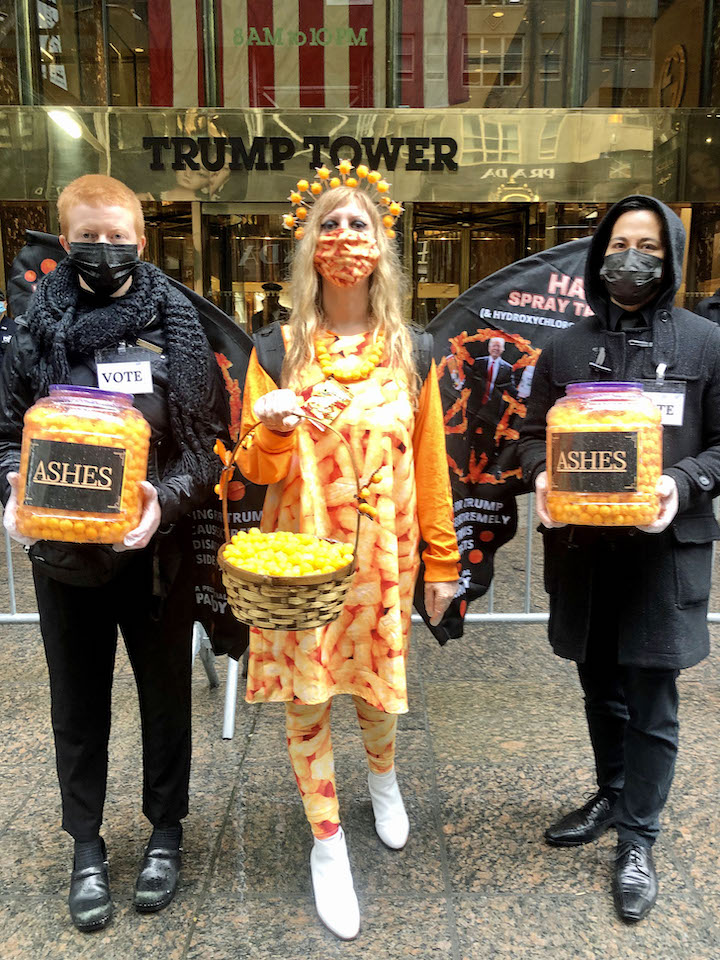
In what way does this current piece — both the ad takeover and the performance — differ from some of your former ones? Your other pieces seemed lighter. And despite your playful costume, it is quite intense.
This takeover is a true product of the 2020 dystopian nightmare reality that came to be under Trump — the poster created and installed during the last day of my mother’s life, with the funeral procession taking place after her Zoom funeral.
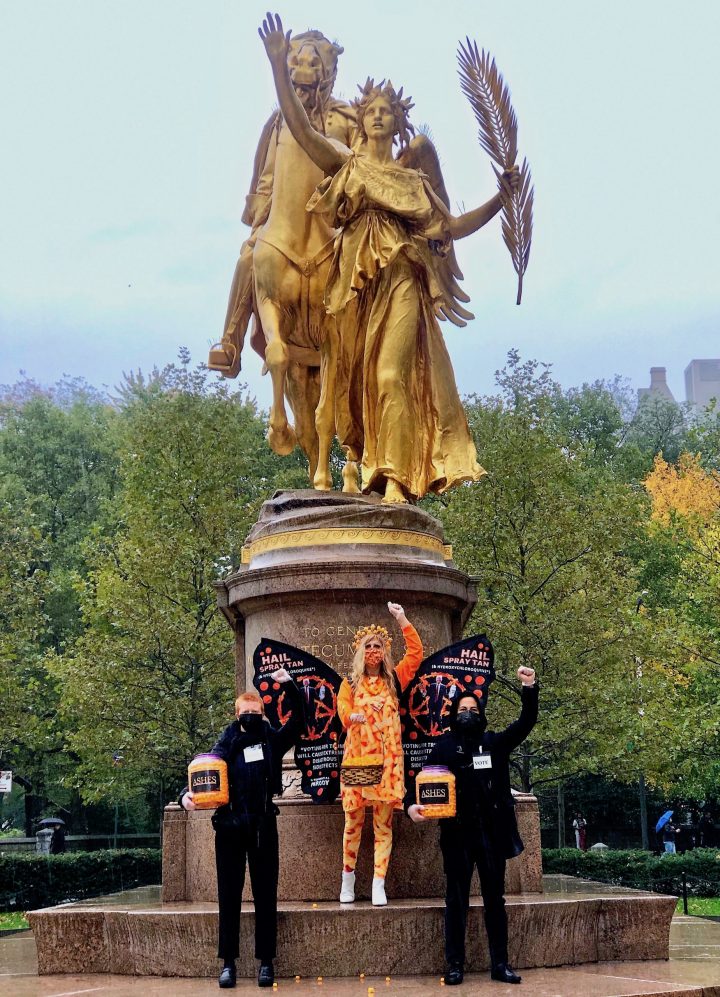
This performance piece also entails a procession. Can you tell us something about that?
In a typical funeral you see who’s there, and they’re able to offer condolences. I was filmed at my mom’s and wasn’t able to speak to anyone that attended. Grieving is isolating to begin with; grieving during a pandemic makes it even more so. I imagine there’s a group of us from 2020 that deeply understands what it means to have a FaceTime goodbye with the person you love most.
After my father died, for coping I went out dancing a lot. I was also in a play at the time. Neither of those are realities in 2020. 2020 has consumed so many of us with grief, whether it was loss of a loved one, or loss of employment, loss of ability to socialize the way we used to, even loss of the way we used to be able to hug, and most importantly, the loss of basic human rights. Watching the Trump debacle unfold during these last four years, and now during a pandemic, has been too next level. It’s more important than ever to get out the vote. So I created a funeral march of sorts, to honor my mom and the many other lives tragically lost under the reign of Trump, because it’s time for the Demon Cheeto to go.
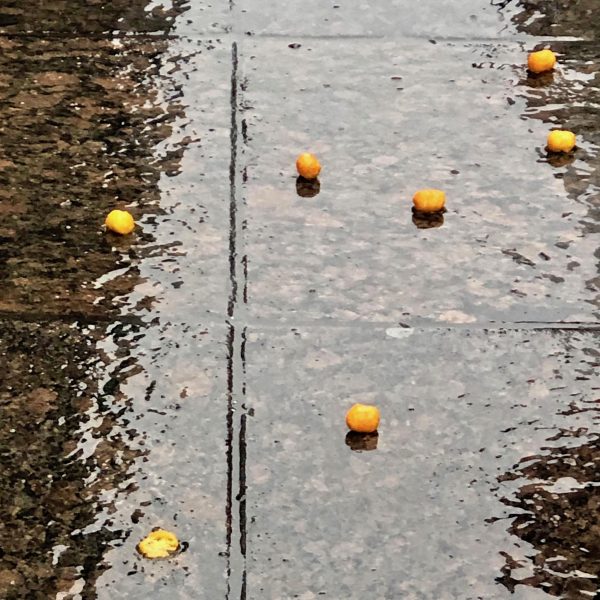
We last spoke over a year ago. Have you any further thoughts on the state of our nation?
The country’s become a dumpster fire, but we have to keep trying, or it’ll just get worse. We must vote Trump out of office, ultimately- this work is to help to get out the vote.
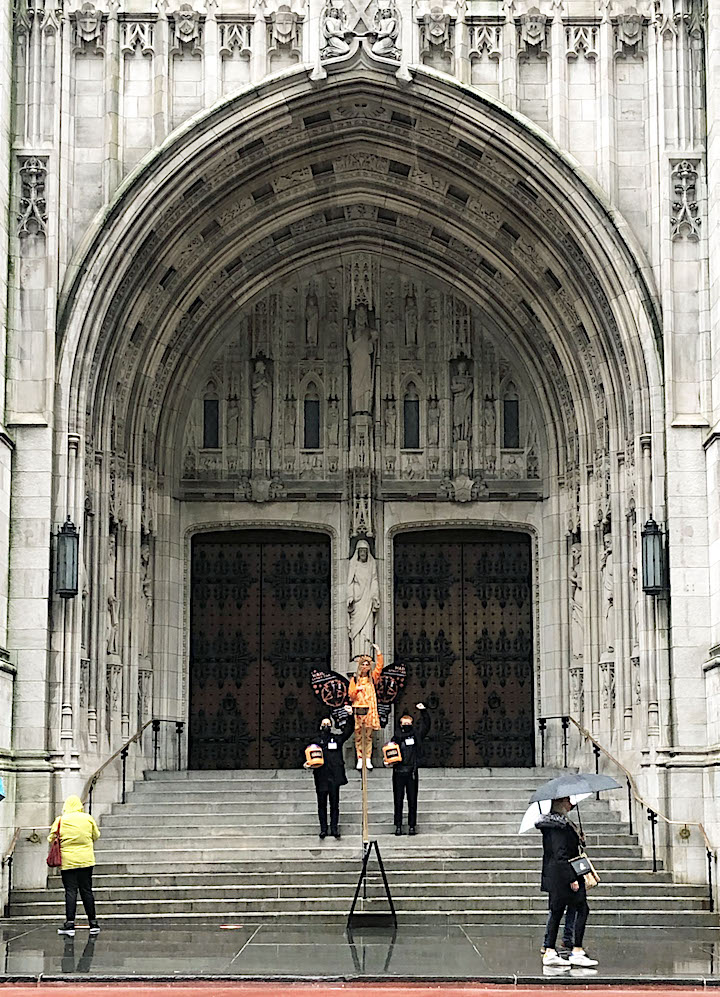
What do you see as your personal mission in these dire times?
To help get out the vote and get Trump out of office. I come from a background in comedy — CollegeHumor, The Onion, SNL. Trump’s reign has been so negatively absurd, it’s been made up of laugh and cry at the same time moments — moments of horrified disbelief, so I like to unite people with laughter, since we all may be crying on the inside.
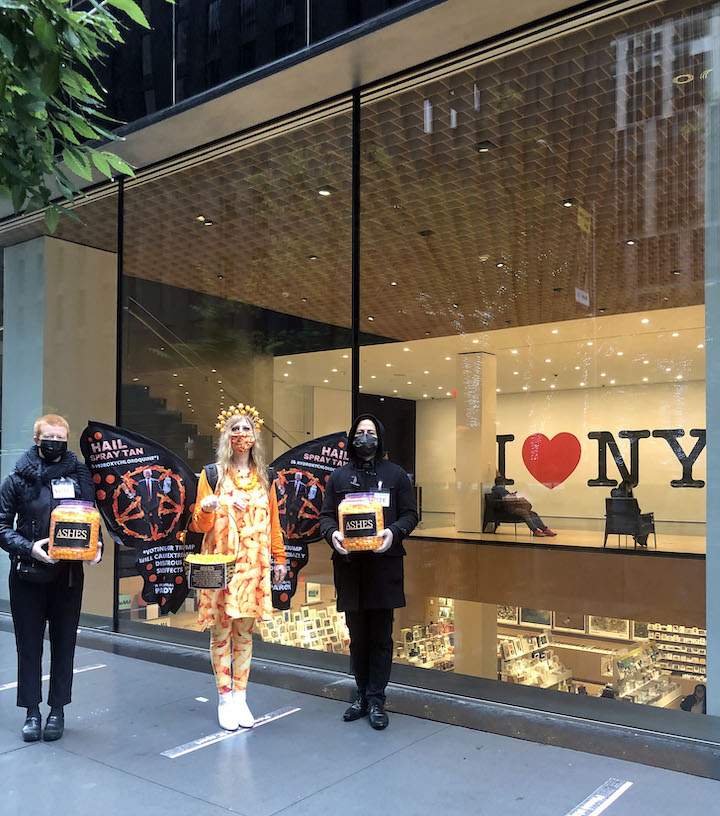
And what’s ahead for you?
I will keep on creating, fighting, and trying to help make a difference by using my privilege to subvert, owning my risk with embrace, and hope my mom and dad are up above, watching and protecting.
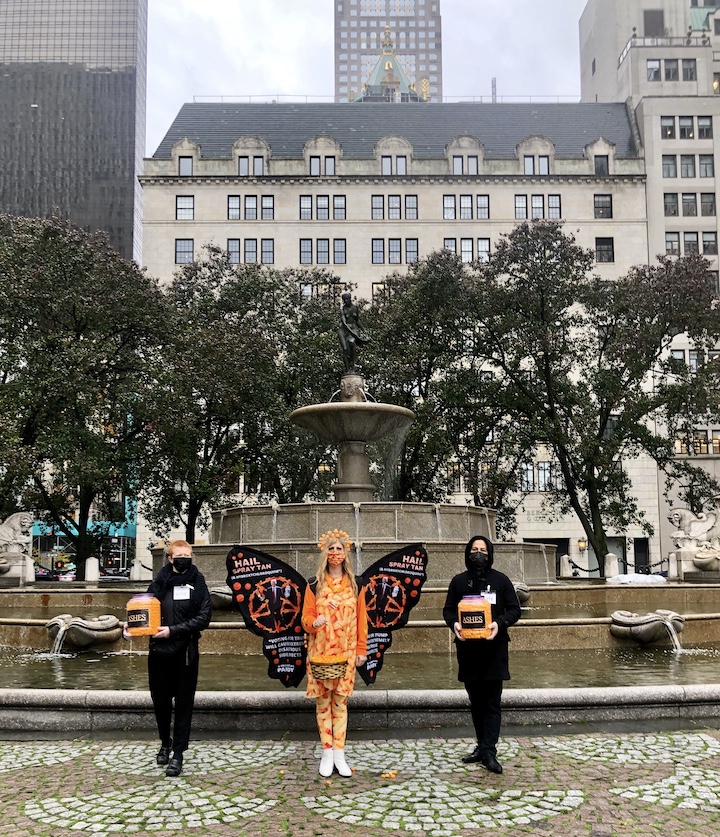
Thank you for what you are doing. And I am sorry for your loss.
Note: Maia’s wonderful wings were created in collaboration with Matt Siren
Photo credits: 1 Courtesy of Maia Lorian 2-7 Lois Stavsky
